"We do know Oswald had intelligence connections. Everywhere
you look with him, there are fingerprints of intelligence."
~Senator Richard Schweiker, The Village Voice, 1975
Introduction
There are many statements from official sources that contradict Warren Commission findings and most history books’ description of the JFK assassination. They are on the record in the numerous reports following other governmental investigations of the JFK assassination or they were captured in interviews and writings of many of those directly involved in them, but Schweiker’s was perhaps the most damning. Not only because of what he said, but also because of who he was.
Schweiker was a well-respected Republican politician who served under President Reagan from 1981 to 1983 as Secretary of Health and Human Services. He served over 20 years as a Pennsylvania U.S. Representative (1961–1969) and U.S. Senator (1969–1981). In 1976, he had an unsuccessful run to become Vice President in Reagan’s losing presidential campaign.
Most crucial for the purposes of this essay, from 1975 to 1976, Schweiker was a member of the United States Senate Select Committee to Study Governmental Operations with Respect to Intelligence Activities. Which, in deference to its chair Senator Frank Church, was commonly known as the Church Committee. This famous investigative body issued fourteen reports after interviewing hundreds of witnesses and studying thousands of files from the FBI, CIA and other agencies.
Thanks to its work, this is when most Americans were first told about the infamous U.S. assassination plots against foreign leaders, which were a key component of CIA regime control or “change operations”. Targets included the Congo’s Patrice Lumumba, Fidel Castro of Cuba, the Diem brothers in Vietnam, General Schneider of Chile and President Trujillo of the Dominican Republic. Ex CIA director Allen Dulles’ pact with the mob to assassinate Castro was also part of their findings. This information, which could have had an impact on the Warren Commission investigation, was kept secret by Dulles while he served on the Commission –– something CIA historians now refer to as a benign cover-up.
Under senators Gary Hart and Richard Schweiker, the Church Committee also conducted a focused investigation (Book 5) of the Kennedy assassination, concentrating on how the FBI and CIA supported the Warren Commission. Its report was very critical of these agencies:
“... developed evidence which impeaches the process by which the intelligence agencies arrived at their own conclusions about the assassination, and by which they provided information to the Warren Commission. This evidence indicates that the investigation of the assassination was deficient."
To say the least, Schweiker was quite vocal in his views. Consider the following instances:
In 1976 he told CBS News that the CIA and FBI lied to the Warren Commission and that the case could be solved if they followed hot new leads. He also claimed that the White House was part of the cover up.
In a BBC documentary, The Killing of President Kennedy, he made the following blistering statement about the Warren Commission investigation:
“The Warren Commission has in fact collapsed like a house of cards and I believe it was set up at the time to feed pabulum to the American people for reasons not yet known, and one of the biggest cover-ups in the history of our country occurred at that time.”
In this revealing documentary, he goes on to say that the highest levels of government were behind him and his committee being mislead. They were continuing the cover-up, and also that Oswald was clearly involved with pro-Castro and anti-Castro groups, which smacked of an intelligence role as a double agent, and that these relationships were not investigated.
In his Kennedys and King article, JFK and the Unforgivable, this author chronicled some thirty examples of other investigation insiders who contradict the Warren Commission’s conclusions about Oswald being a Lone Nut assassin, which is still the basis of what we can find in most of today’s history textbooks.
Donald Trump and the Mainstream Media’s double standard
Since Donald Trump’s election, CNN has featured non-stop coverage of the President and the ongoing probe into Russia’s alleged meddling in the U.S. elections and possible connections to Team Trump. The Washington Post and New York Times are also piling on with a vengeance. Concerning whether Trump and his network of advisors were complicit, the recent quote from Adam Schiff, the top Democrat on the House Intelligence Committee, kind of summarized the position mainstream media is going with: “We do not have enough evidence to bring to a jury yet but there is enough smoke that warrants an investigation.” And this was before anyone knew of the actual meetings between Russian point-people and Donald Trump, Jr. The smoke that has often been talked about seemed to revolve around six or seven people close to Trump who had contact with Russian persons of interest before the election.
CNN pundits, specialists and reporters are going through each word of each tweet made by the president; each statement made by him and others in his surroundings; and every single touch point between them and the Russians going back for years. At least three separate government bodies are spending millions in investigating the case.
And then, during a rare non-Trump related show on CNN, there it was: on their series The Sixties, re-broadcast in the middle of the Trump cavalcade, we were given their take on the JFK assassination: Krazy Kid Oswald did it alone. It was all explained to us up by their panel of experts: Max Holland, the late Vincent Bugliosi, and Priscilla Johnson McMillan were earnestly telling the audience this discredited tale, in spite of what had been revealed by the Church, HSCA and ARRB investigations. And in spite of what actual participants like Schweiker, Gary Hart, Senator Richard Russell, House Select Committee on Assassinations (HSCA) Chief Counsel Robert Blakey, Schweiker-Hart investigator Gaeton Fonzi, HSCA Deputy Counsel Robert Tanenbaum and many, many other investigation insiders had to say. CNN was doing exactly what Trump has been Tweeting to his cast of fiercely loyal followers: Peddling fake news! Which certainly bolstered historians’ egos around their shameful role in perpetuating fake history about this landmark, trust-breaking event.
In his article The Three Failed Plots to Kill JFK: The Historians' Guide on how to Research his Assassination, this author showed how historians, journalists and investigators could learn a lot by investigating the failed plots that preceded the assassination and no less than six other potential patsies who had many similarities with Oswald. In this article we will try to decode the famous lines that make up the epigraph to this essay, and point out a whole area of investigation that the Warren Commission was almost completely shielded from and that journalists and historians have turned a blind eye to. Namely, the cast of characters Oswald crossed paths with who were plausibly, and in many cases definitely, connected to intelligence. These names originate with the work of some of the very best researchers in the field. We are at a point where we can now take stock of what has already been done, crosscheck work and ask ourselves: What does this mean? This author would like to underline the incredible travails of determined independent researchers who did a lot of the grunt work and represent many of the key sources for this article. Hopefully this will serve as a small testament to what they have accomplished.
If you think that seventy-one-year-old billionaire Trump connects well with Russian meddlers according to CNN and others, wait until you see just who twenty-four-year-old Lee Oswald, the truant/loner/murderer, connects with. It should make serious historians pause and ask themselves if they may have missed something.
Oswald and Intelligence: Odds and Ends
Before getting to who Oswald links up with let us look at general points where we can find fingerprints of intelligence. From Jim Marrs’ Crossfire we can read about how Oswald:
- Possessed a Minox spy camera.
- Had a notebook that included microdots.
- Loved James Bond and the spy program I Led Three Lives.
- Worked at Atsugi air base in Japan as a radar operator with possible security clearance. This was the base where the CIA’s U2 top-secret high altitude surveillance program was housed.
- Was discharged from the Marines, entered Russia through a favorite spy-friendly crossing point in the middle of a false defector program, threatened theatrically to give away U2 secrets to the Russians in the U.S. embassy, and returned easily to the U.S. with his Russian wife, who herself had ties to Russian intelligence. All this with financial support in ways that could have only been state-sponsored.
- Learned Russian in a way which New Orleans district attorney Jim Garrison, himself an ex-marine, concluded could only have been through special training for an intelligence assignment. He also discovered that Oswald’s base for his Fair Play for Cuba activities was right in the heart of New Orleans’ intelligence establishment, and that he was most probably playing an agent-provocateur role. He grew convinced that intelligence assets were obstructing his investigation into Oswald’s links, something that was confirmed by the HSCA and ARRB releases.
- Applied, while in the Marines, to a very obscure Swiss college called Albert Schweitzer that appears to be CIA-linked.
Researcher Mae Brussell argued that Oswald’s mission in Russia was to help the Russians bring down Gary Powers’ U2 flight over Russia and therefore sabotage Eisenhower’s attempt at rapprochement with the Russians at an upcoming summit meeting. Others have pointed to those who were convinced Oswald was a spy, including Marines Oswald served with, Gerry Patrick Hemming, Oswald’s mother and others.
According to Gaeton Fonzi, former CIA Director Richard Helms told reporters during recess of the House Select Committee on Assassinations in 1978 that “no one would ever know who or what Lee Harvey Oswald ... represented.” Asked whether the CIA knew of any ties Oswald had with either the KGB or the CIA, Helms paused and with a laugh said, “I don't remember.”
According to author and intelligence specialist John Newman, a CIA propaganda associate of David Phillips, William Kent, intimated to his daughter at a family Thanksgiving gathering: “Oswald was a useful idiot.”
It was common knowledge in the Tokyo CIA station that Oswald worked for the agency ... . Right after the President was killed, people in the Tokyo station were talking openly about Oswald having gone to Russia for the CIA. Everyone was wondering how the Agency was going to be able to keep the lid on Oswald. But I guess they did.
~ interview of Jim and Elsie Wilcott, former husband and wife employees of the Tokyo CIA Station, San Francisco Chronicle, "Couple Talks about Oswald and the CIA," September 12, 1978
Jane Roman, who in 1963 was the senior liaison officer on the Counterintelligence Staff of the Central Intelligence Agency in Langley, Virginia, gave Jefferson Morley and John Newman this revealing answer to the following question during a seventy five-minute taped interview in 1994: “is this indicative of some sort of operational interest in Oswald’s file?” This was the key question of the interview, and Roman took it head on. “Yes,” she replied. “To me it’s indicative of a keen interest in Oswald held very closely on the need to know basis.”
John Newman is one of the researchers who did the most work in analyzing intelligence files on Oswald, and has uncovered, along with Malcolm Blunt, content and patterns that can only be explained by Oswald being used for intel purposes. This includes the very late opening of a standard CIA 201 file that would have been normally immediately opened upon a defection.
Lisa Pease wrote for Probe magazine in 1997 about Otto Otepka, who was the very competent head of the State Department's Office of Security (SY) during much of the Oswald saga. He would have been the one who was behind initiating a study of defectors to Russia in 1960. The CIA –– probably James Angleton, who is suspected of running Oswald at this time –– gave instructions not to delve into Lee Harvey Oswald. That may be the reason Otepka was fired a few weeks before the assassination.
By the time Oswald returned from Russia, his days were numbered. However, during the year remaining in his life, the additional traces he would leave linking him to intelligence would be omnipresent: Only later dug into by serious researchers but ignored by mainstream media and historians.
During the summer of 1963, Oswald would ostensibly abandon his expecting wife and young baby to open an FPCC Chapter for which he was the lone member in the very hostile environment of New Orleans. In his previous article (The Three Failed Plots to Kill JFK), this author presents the case that Oswald was more likely involved in an intelligence operation to counter this has-been, informant-infested outfit, publicize his Marxist legend and weed out communists. The similarities with six other potential patsies profiled in the article reinforce this notion.
A clue to Oswald’s real loyalties came during a televised interview he gave in August 1963 with a revealing Freudian slip he made when he said he was (while in Russia) “under the protection of the government,” which he quickly corrected –– but it was too late. The “Hands Off Cuba” flyers that he distributed with the now infamous Camp Street address represented a major gaffe, as it placed him directly in the presence of his anti-Castro friends and blew his cover to people willing to investigate this like Jim Garrison and Senator Schweiker.
Thanks to the HSCA and the ARRB record releases, we know for sure that intelligence networks played very important roles in hiding key facts from the Warren Commission and obstructing the HSCA, Garrison, and ARRB activities which were getting close to linking Oswald to the world of intelligence.
Perhaps the most explicit links came in the form of the Lopez Report written up for the HSCA and kept secret for many years. Because of the diligent work of HSCA investigators Dan Hardway and Ed Lopez, we now know that Oswald was, at the very least, partly impersonated in Mexico City under the watchful eye of CIA operatives there –– who later played starring roles in covering this incident up. Perhaps the most explicit links came in the form of their report, “Oswald, the CIA, and Mexico City” (aka the Lopez Report), written up for the HSCA and kept secret for many years.
Oswald’s Intelligence Touch Points
The Warren Commission portrayed Lee Oswald as a lone-nut, Marxist, and drifter who was not on anyone’s radar. The New York Times coverage of the Warren Commission’s Report release includes the following statement:
The Warren Commission also rejected, after complete access to the files of the FBI and the Central Intelligence Agency, the claim that Oswald may have been some kind of American undercover agent.
This conclusion of course has today proven to be founded on quicksand. Far from their having “complete access”, it has been confirmed that intelligence agencies played a key role in keeping information about Oswald hidden away from the Commission, for example regarding Oswald in Mexico City. Schweiker’s bombshell assertion clearly advances that Oswald had intelligence connections. The Church Committee and the HSCA both impeached the Warren Commission by unequivocally concluding that, among other inadequacies, it had not properly investigated the possibility of a conspiracy. (For more, see this author’s article on the historical record of Government investigations).
Based on the standards we are currently witnessing with the barrage about Trump and friends in Moscow, let us look at who should have been turned inside out in a serious investigation about a far more serious crime. In the following section we will briefly go over a long list of persons with definite or plausible intelligence credentials/links who crossed paths with Oswald in one way or another. Some of the links are loose, others are solid; of course not all are involved in the assassination. All, however, would merit an in-depth analysis by true investigators. For the purpose of this article we will provide short snapshots. To know more about an individual, the author encourages the reader to follow the links/sources.
If we were to add persons with indirect intelligence connections, Cuban exiles of interest, Mob-related personalities, the number of persons of interest that would give insight into who Oswald really was and what he and others were up to would more than likely double. Seen in their entirety, we can conclude that if there is smoke around the current Russia meddling intrigue, what we have here is a forest fire and a cover-up that was more than just “benign.”
New Orleans, Atsugi, California, Russia, Dallas
Let us look at who Schweiker could be plausibly referring to when he confirmed that Oswald had intelligence connections. (Next to the name, we will list the source material in the literature.)
David Ferrie (Jim Garrison)
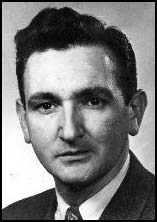 |
| The young David Ferrie |
Oswald’s first Intel connection is one of the most important for confirming Schweiker’s assertion. David Ferrie plays an important role in Oswald’s fate during two phases of Oswald’s short life. In 1955, both Ferrie and Oswald were members of the Louisiana Civil Air Patrol where Ferrie taught aviation. Author Greg Parker, in Lee Harvey Oswald’s Cold War, makes the case for the CAP being linked to the CIA’s recruitment activities and Texas School Book Depository’s owner Harold Byrd –– an oil-man known for his deep hatred of JFK and who is connected with many persons of interest, as well as the world of espionage. Ferrie later became a contract CIA agent flying bombing missions over Cuba at the request of Cuban-exile Eladio Del Valle, who was himself intelligence connected and a person Jim Garrison was pursuing concerning the assassination until Del Valle was killed, within 24 hours of Ferrie’s own mysterious death.
During the summer of 1963, Ferrie and Oswald link up once again at 544 Camp Street. This location was an address on some of Lee Harvey Oswald’s Fair Play for Cuba literature. The building was a hub for right-wing, anti-Castro activities centered around the office of FBI- and CIA-connected Guy Banister, as well as intelligence-backed Cuban exiles. During this period, Ferrie was frequently seen in the building and elsewhere, in the company of Banister, CIA agent Clay Shaw, CIA-connected Sergio Arcacha Smith, Oswald and others of this ilk who became key suspects in the Garrison investigation, which was sabotaged by special interest groups. The HSCA and ARRB findings clearly confirm as much. Ferrie confessed a lot about the assassination to Garrison’s investigator Louis Ivon, but died mysteriously before he could be taken to trial.
Gerard Tujague (Destiny Betrayed – JFK: The Cuba Files)
In early 1956, Oswald joined Gerard Tujague’s shipping company. Tujague was also vice-president of the Friends of Democratic Cuba (FDC), which is believed to be a CIA and FBI front that was largely created by Guy Banister and Sergio Arcacha Smith, and was also linked to Clay Shaw. Cuban intelligence identified this organization as a perpetrator of hostile acts against Cuba.
In a strange incident in 1961 while Oswald was in Russia, the FDC used Oswald’s name in an attempt to buy 10 Ford pick-up trucks at the Bolton Ford lot in New Orleans.
Richard Case Nagell (The Man who Knew too Much – Destiny Betrayed – Jim Garrison)
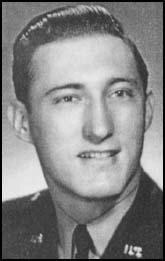 |
| Richard Case Nagell |
While in Atsugi, Japan, Oswald met up with Army Intel agent Richard Case Nagell for the first time. Nagell began a CIA career in 1955-56, which eventually brought him into the world of Black ops where CIA people like E. Howard Hunt and Tracy Barnes excelled.
In 1962, he served as a double agent in Mexico City. He hinted to a friend that he knew the CIA’s David Phillips who, as we will see, became a key suspect for many researchers with respect to the Oswald sheep-dipping operations. By October 1962, the Soviets advised him that the violent Cuban exile group Alpha 66 was plotting to assassinate Kennedy. They thought this would be blamed on them. So they hired him to investigate, and possibly abort the plot. His investigations allowed him to identify Arcacha Smith, Ferrie, Carlos Quiroga, Tony Cuesta and a Leopoldo as possible conspirators. In 1963, he tried to convince Oswald he was being set up to be the fall guy. He failed. Nagell eventually faked a bank robbery so as to be in jail when the assassination took place. His interviews with researcher Dick Russell, his material links to Oswald when he was arrested, and his pre-assassination warnings go a long way in proving his credibility.
Colonel Nikolai Eroshkin
According to what Nagell told Russell, while Oswald was in Atsugi, he met with GRU agent Colonel Eroshkin: a CIA defection target.
Kerry Thornley (Destiny Betrayed)
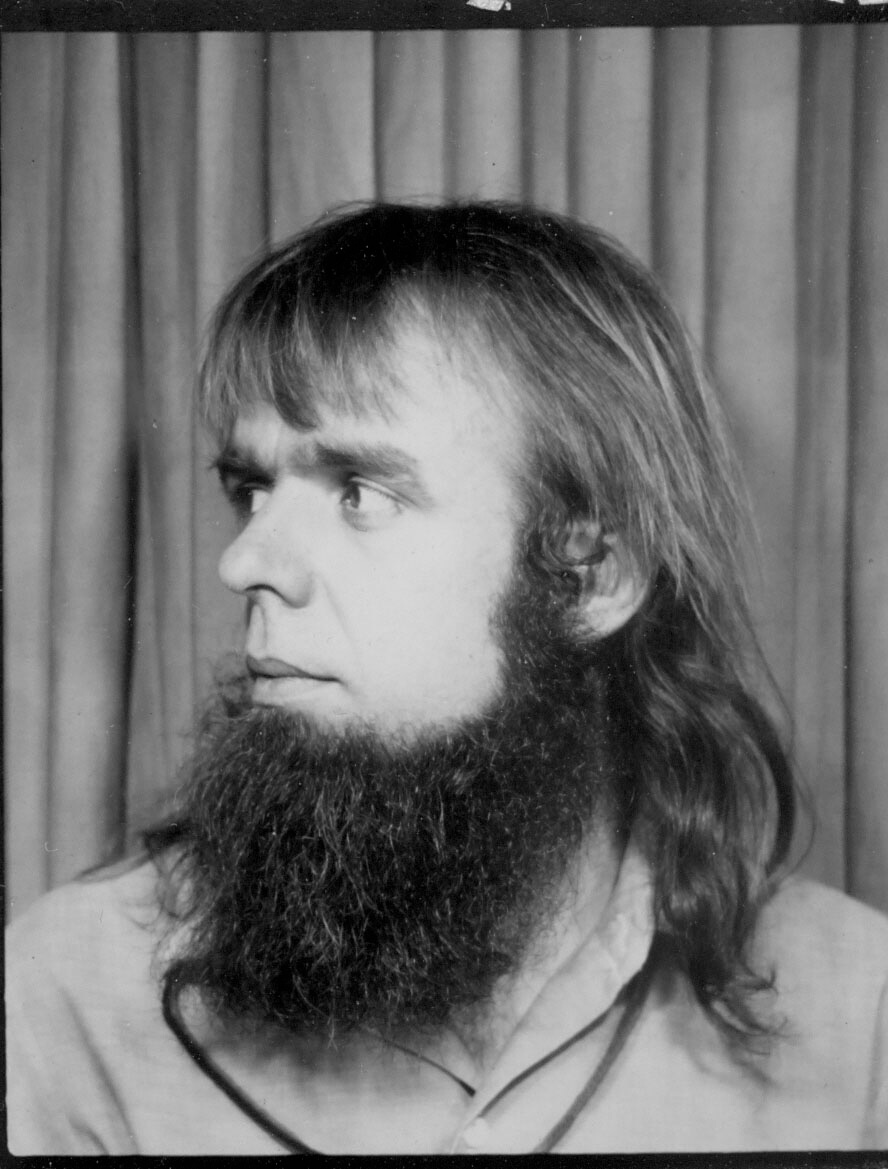 |
| Kerry Thornley |
When Oswald was moved back to California in 1959, few Marines bought into his communist-leaning persona. Also, many described him as quite a poor marksman. It is here that fellow-Marine Kerry Thornley met him for the first time. He wrote a book about him before the assassination called the Idle Warriors, and then another in 1965. He became the go-to Marine for the Warren Commission in their attempt to paint Oswald as unpatriotic.
In the summer of 1963, Thornley popped backed into the picture in New Orleans where several witnesses saw him with Oswald either in public or at Oswald’s apartment. There is evidence that Thornley picked up Fair Play for Cuba flyers for Oswald. An FBI memo states that Thornley and Oswald went to Mexico together. And despite preliminary denials, he eventually admitted links to David Ferrie, Guy Banister, Carlos Bringuier and Ed Butler –– all intelligence-connected persons of interest who will be covered in this article. He also eventually confirmed his utter hatred of Kennedy. Thornley was actually indicted by Jim Garrison for perjury because of his lies about this association with Oswald in New Orleans in the summer of 1963. Further, two witnesses told Garrison that Thornley had said that Oswald was not a communist. Which makes his performance before the Warren Commission quite suspicious.
Rosaleen Quinn (Lee Harvey Oswald’s Cold War)
In 1959, fellow Marine Henry Roussel set up a date between Oswald and his aunt Rosaleen Quinn, an airline stewardess who studied Russian with a Berlitz tutor for the State Department exam, as she was interested in working in the American embassy in Russia. She is suspected by some as having monitored Oswald’s skills with the Russian language, which she qualified as very good. This coincided with Oswald’s imminent departure from the infantry and the beginning of his Russian adventure. In Lee Harvey Oswald’s Cold War, Greg Parker underscores an intelligence angle to her that he thinks should be explored.
Gerry Patrick Hemming (Oswald and the CIA)
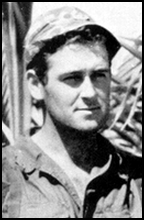 |
| Gerry Hemming |
Hemming has been a difficult nut to crack for many of the researchers who interviewed him. He was someone who seems to have known something about the assassination, but is difficult to read.
Hemming was in the U.S. Marine Corps from 1954 to 1957. He was honorably discharged and became a soldier of fortune who eventually fought for Castro’s revolutionary army with another person of interest, Frank Sturgis. They both came back quickly after feeling disillusioned by Castro. Hemming also spent some time in Atsugi. Though the CIA has denied any relationship with Hemming and Sturgis, this has been contradicted by files that show that Hemming frequently interacted with the CIA. Frank Sturgis’ later association with CIA’s E. Howard Hunt and James McCord, along with Cuban exiles, during the Watergate scandal, further contradicts this claim.
Hemming eventually founded Interpen in 1961. This was a paramilitary exile group that specialized in the penetration of revolutionary forces. Interpen is linked to many people involved in the training of Cuban exiles and persons of interest in the assassination. Interpen set up shop right in the midst of the Miami CIA JM/WAVE station and Cuban exile communities. HSCA investigator Gaeton Fonzi came to believe that much of the brainwork behind the plot came from disillusioned rogue CIA officers associated with this Miami nexus and involved in the Bay of Pigs fiasco.
It is quite possible that some of Hemming’s contacts with the CIA took place in Los Angeles in early 1959 when he would have met Lee Harvey Oswald who, along with his El Toro base friend Nelson Delgado, showed interest in joining the Castro forces before he had become persona non grata in the United States. Hemming claims that Oswald bumped into him at the Cuban consulate in Los Angeles and inquired about joining up with him. Hemming thought of him as a snitch and later met him at the base gate where he confronted him. He says he relayed this information to James Angleton. There is some corroboration of these meetings to be found in CIA files, and from Nelson Delgado, who confirmed that Oswald was at the Cuban consulate for discussions about their project and met a civilian for almost two hours at the base gate at the times Hemming states these took place.
Hemming, in later interviews, went on to express his opinion that Oswald was a patsy.
Gregory Golub (Destiny Betrayed)
The logistics involved in getting Oswald into Russia in October 1959 has been found by many to be perplexing. The nature and speed of his discharge, his financing, his route through Helsinki, his stay in expensive five-star hotels, and finally, the expedient issuing of a visa into Russia within 24 hours of his application –– these all seem too complex for an uneducated former truant. Golub, who issued Oswald’s visa, may have had direct ties to the American State Department.
Here is how the HSCA describes the visa situation:
HSCA Report Findings on the Issue of Oswald's Visa:
In an effort to resolve this issue, the committee reviewed classified information pertaining to Gregory Golub, who was the Soviet consul in Helsinki when Oswald was issued his tourist visa. This review revealed that, in addition to his consular activities, Golub was suspected of having been an officer of the Soviet KGB. Two American Embassy dispatches concerning Golub were of particular significance with regard to the time necessary for issuance of visas to Americans for travel into the Soviet Union. The first dispatch recorded that Golub disclosed during a luncheon conversation that:
MOSCOW had given him the authority to give Americans visas without prior approval from Moscow. He [Golub] stated that this would make his job much easier, and as long as he was convinced the American was “all right” he could give him a visa in a matter of minutes ...
The second dispatch, dated October 9, 1959, 1 day prior to Oswald's arrival in Helsinki, illustrated that Golub did have the authority to issue visas without delay. The dispatch discussed a telephone contact between Golub and his consular counterpart at the American Embassy in Helsinki:
… Since that evening [September 4, 1959] Golub has only phoned [the U.S. consul] once and this was on a business matter. Two Americans were in the Soviet consulate at the time and were applying for Soviet visas through Golub. They had previously been in the American consulate inquiring about the possibility of obtaining a Soviet visa in 1 or 2 days. [The U.S. consul] advised them to go directly to Golub and make their request, which they did. Golub phoned [the U.S. consul] to state that he would give them their visas as soon as they made advance Intourist reservations. When they did this, Golub immediately gave them their visas ...
Thus, based upon these two factors, (1) Golub's authority to issue visas to Americans without prior approval from Moscow, and (2) a demonstration of this authority, as reported in an embassy dispatch approximately 1 month prior to Oswald's appearance at the Soviet Embassy, the committee found that the available evidence tends to support the conclusion that the issuance of Oswald's tourist visa within 2 days after his appearance at the Soviet consulate was not indicative of an American intelligence agency connection. Note: If anything, Oswald's ability to receive a Soviet entry visa so quickly was more indicative of a Soviet interest in him.
Author’s comment: If this is what it did in fact indicate, why wasn’t a CIA 201 file immediately opened after Oswald’s defection? It was not opened until one year later.
Richard Snyder (Destiny Betrayed)
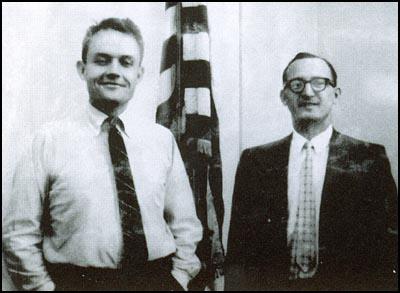 |
| John McVickar & Richard Snyder |
In early November of 1959, Oswald decided to pay a visit to the American Embassy in Moscow to renounce his citizenship. He met with former CIA recruiter Richard Snyder, who was probably working under diplomatic cover as a consular official. He had previously spotted student talent for the CIA who could travel to Russia under operation REDSKIN. Some of his notes while in Russia refer to false defectors. Snyder used well-studied delay tactics to avoid having Oswald fill out the necessary forms to renounce his citizenship. This made Oswald’s re-entry to the U.S. a lot easier and demonstrated Snyder’s knowledge of the fake defector programs in place.
In his exchange with Snyder –– which researcher Malcolm Blunt refers to as theatrical and designed to be picked up by Russian eavesdropping –– Oswald threatened to give away military secrets. This most likely was a reference to the U2 surveillance operations. This makes the opening of a 201 file only a full-year later incredible, as Oswald now should have also been considered a traitor. Unless, of course, something else was going on.
John McVickar (Oswald and the CIA)
While Oswald was going through his charade with Snyder, they were being observed by embassy official John McVickar. He is the one who alerted and then set up intelligence-linked journalist Priscilla Johnson to interview Oswald in his Moscow hotel room. He was then was later debriefed by her. She would go on to make a career out of endorsing the Warren Commission line.
Priscilla Johnson (Oswald and the CIA)
In 1959, Johnson was a correspondent for the North American News Association (NANA). Her November 13th interview with Oswald was the basis for news reports that would publicize Oswald the defector to a U.S. audience. In 1977 she published her book Marina and Lee after building a relationship with Marina Oswald, who by then was still very cooperative with authorities. She went on to become a staple in pro-Warren Commission propaganda and one of the first in a long line of intelligence friendly so-called JFK assassination experts.
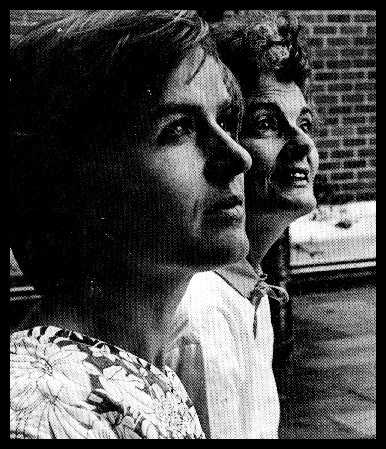 |
| Marina Oswald & Priscilla Johnson |
Her job and relationship with the U.S. embassy at the time of Oswald’s defection already made her a natural ally for intelligence organizations. She identified propaganda specialist Cord Meyer as one of the CIA recruiters who took an interest in her. Documented cases of her passing on information to the CIA, her access to CIA space and resources, her own writings and her role in hosting star-defector Svetlana Stalin, daughter of Joseph Stalin, in 1967, represent strong evidence of her ties to intelligence. She was even given permission to live with heavily guarded Marina Oswald for months in 1964 while they worked on the book.
The release of intelligence files in 1993 by the ARRB seal the deal, as the following information from a contact report reveals. CIA recruiter Donald Jameson reported this about her in 1962, after a ninety minute interview: “I think that Miss Johnson can be encouraged to write pretty much the articles we want ... .” We also know that the CIA had a 201 file opened on her in the mid-1950s and that she was considered to be knowledgeable about Soviet affairs.
Leo Setyaev (Oswald and the CIA)
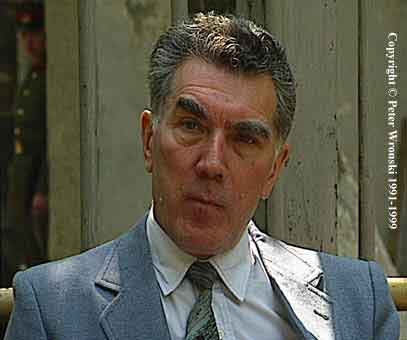 |
| Lev Setyaev |
According to John Newman, Oswald had a name he could contact while he was in Russia if he needed anything. Leo Setyaev is a name that appears in Oswald's address book, and, according to Marina, is who Oswald intended to call in 1961 when visiting the American embassy. She also stated that he had met Oswald in the Hotel Metropole in Moscow shortly after his arrival and had helped Oswald get on a Radio Moscow show, where he criticized the U.S. for a Russian audience. The FBI and CIA had files on Setyaev, who was quite possibly an informant for the CIA.
Robert Webster (Destiny Betrayed)
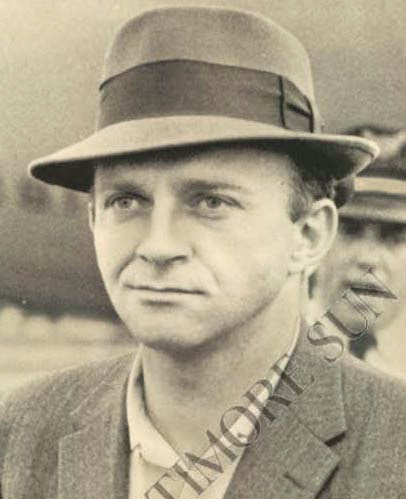 |
| Robert Webster |
Webster is another person some researchers suspect was a false defector who entered Russia and returned to the U.S. at around the same times Oswald did. He worked with the CIA-linked Rand Corporation, which was known for its high-tech products, which were of interest to Russia. Oswald, when planning to leave Russia in 1961, inquired about Webster’s status to a U.S. embassy official.
Strangely, Webster had met Marina Prusakova in 1959 before she married Oswald, and Webster’s Leningrad address was found in Marina’s address book after the assassination. It appears Webster spoke English with her, a language she claimed to not understand. All this suggests that Russia was aware of the false defector program and that Marina may have been assigned Russian intelligence tasks to identify some of them. Webster also brought back a Russian spouse some feel was linked to Russian intelligence.
Marina Oswald (Destiny Betrayed – Richard Schweiker)
Marina’s uncle worked for the Russian version of the FBI. Her interactions with both Oswald and Webster and the ease by which she was allowed to leave Russia are among the reasons that some researchers believe Marina was intelligence-linked, and that Oswald’s and Webster’s suspected false defector roles are why she was made to cross paths with them in the first place.
Schweiker was onto this:
The key is why did they let him (Oswald) bring a Russian-born wife out contrary to present Russian policy, he had to get special dispensation from the highest levels to bring his Russian-born wife out, that in itself says somebody was giving Oswald highest priority either because we had trained and sent him there and they went along and pretended they did not know to fake us out, or they had in fact inculcated him and sent him back and were trying to fake us out, but he had gotten a green light no other American had gotten.
Francis Gary Powers (Oswald and the CIA)
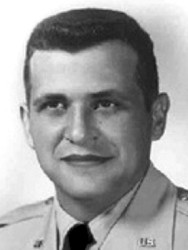 |
| Francis Gary Powers |
Powers is the U2 pilot whose plane was shot down over Russia while Oswald was there after threatening to give away U2-related secrets. This scuttled Eisenhower’s upcoming summit meeting with Khrushchev and is what probably contributed to Eisenhower’s warnings about the power of the military industrial complex in his farewell address to the nation. There has been some speculation that Oswald was at his trial in Russia. Powers and others have blamed Oswald for his being shot down. Oswald, while in Russia, wrote a letter to his brother, Robert, in which he says that he saw Powers in Moscow.
Spas Theodore Raikin (JFK and the Unspeakable)
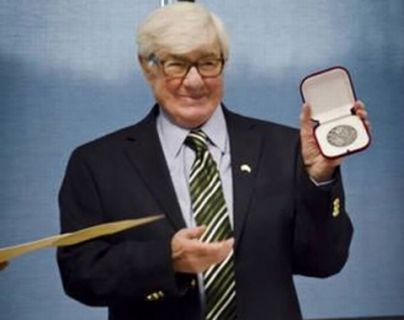 |
| Spas Raikin |
Since the ARRB cleared the release of a large number of classified documents, a number of CIA files have shed light on the person assigned by the U.S. State Department to greet the Oswald family on June 12, 1962 when they stepped off the ocean liner Maasdam in Hoboken, New Jersey. Raikin was a representative of the Traveler’s Aid Society who helped them pass smoothly through immigration and customs.
Here is how James Douglass describes what the Warren Report did not reveal about him: “Raikin was at the same time secretary-general of the American Friends of the Anti-Bolshevik Nations, an anti-communist organization with extensive intelligence connections –– like the American government, an unlikely source of support for a traitor.”
Andy Anderson/Eleanor Reed (Joan Mellen)
The Agency claims that they did not debrief Oswald upon his return to the USA from Russia. On the surface, this seems ridiculous. But he may have been when he went through Copenhagen on his way back to the United States. In 1978, Donald Denesyla told the HSCA that he had in fact received a report about a defector who returned from Russia in 1962 who had worked in a radio factory. This report, written by Andy Anderson, went to Robert Crowley, a close friend and colleague of James Angleton. Crowley also handled the Webster case.
Joan Mellen argues that the actual de-briefer may have been Eleanor Reed.
Further corroboration that the CIA Soviet Russia Division, Soviet Realities, SR6, in the person of Eleanor Reed, debriefed false defectors is contained in a document that I have just discovered that the CIA released “as sanitized” in 1998. The document resides in Robert Webster’s file, is dated 17 August 1962, and is telling for several reasons; the cases of Oswald and Webster are so similar that we can await, with reasonable expectation, that a parallel document of Oswald’s debriefing by Reed (with, perhaps, her frequent debriefing partner, Rudy (“Valentino”) Balaban, may well surface. This document demonstrates beyond doubt that Reed (“Anderson”) was an SR6 debriefer.
In other words, Reed used the Anderson name at times.
John Fain (The Twelve Who Built the Oswald Legend)
In Dallas, Fain was the first FBI agent who interrogated Oswald in June and then in August 1962. He was interested in finding out if the Russians were using him or his wife. He described Oswald as impatient, insolent and secretive during the first meeting. Though more cooperative during the second, he was still not fully transparent. Fain showed his suspicions around the subject of Oswald wanting to be part of a country that represented the biggest threat to the U.S.
There is more to Fain’s involvement in the Oswald saga than this however, as he is probably the agent that Oswald’s mother Marguerite interacted with while her son was in Russia and he also made certain the FBI was in in sync with the CIA in the administration of Oswald’s files.
George Bouhe, Max Clark and the White Russians of Dallas (Destiny Betrayed)
In the summer of 1962, Oswald settled in Fort Worth, where he was greeted by White Russians. This group was very cooperative with intelligence forces, especially in welcoming anti-communist immigrants to their fold. These are the people our supposed pro-Marxist traitor cozied up with in what Jim Garrison referred to in his memoir as “The Social Triumphs of Lee Oswald”. Of course, the Warren Commission’s curiosity was not even piqued by these relationships of direct adversaries: a communist dealing with White Russians who wanted to overthrow the Red regime and bring back the czar. Probably many in this group had direct contacts with intelligence. Let us single out two: The leader George Bouhe kept files on the White Russians and just happened to be a neighbour of Jack Ruby. It is he who introduced Oswald to Max Clark, a retired Air Force Colonel who Bouhe suspected was involved with the FBI and security work. It was Clark and Dallas CIA Station Chief J. Walton Moore who would connect Oswald with one of his most prominent intelligence contacts …
George DeMohrenschildt (Destiny Betrayed – Family of Secrets – Spartacus – I’m a Patsy)
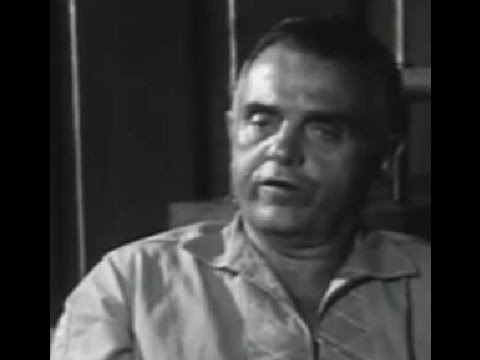 |
| George DeMohrenschildt |
DeMohrenschildt came from a family of Russian nobility; his father was governor of Minsk and director of the Baku oil fields before the Russian Revolution. Some family members became involved in intelligence activities against the communist regime that took over the country and relocated in foreign countries. There is even correspondence between George’s brother Dimitri, a CIA asset in Europe, and Allen Dulles that goes as far back as 1953. It goes without saying that Dulles kept these relations hidden from his Warren Commission colleagues.
George moved to the U.S. in 1938. The British suspected he worked for German intelligence at the time. Through his studies, work in the oil industry and involvement with the Texas Crusade for Freedom and other associations, he came into contact with George H. W. Bush, Clint Murchison, Harold Byrd, H.L. Hunt (all oilmen) and Dallas mayor Earle Cabell. His international travels dovetail with CIA relations for which he received favors.
He is perhaps the person who interacted the most with the Oswalds before Lee’s move to New Orleans. In the fall of 1962, he persuaded Oswald to move to Dallas. DeMohrenschildt helped Oswald gain employment by January 1963 at Jaggars-Chiles-Stovall. This is surprising, as JCS was a graphics art house that seems to have done some work related to U2 flights over Cuba, and Oswald’s notebook lists it with the words micro dot beside it. While there he showed co-worker Dennis Ofstein photos of Soviet military headquarters he had taken and gave him detailed descriptions of military related observations he was able to make while in Russia. DeMohrenschildt is also the one who introduced the Oswalds to Ruth Paine in February. It has become apparent to many that DeMohrenschildt was a CIA-designated baby-sitter who had numerous meetings with Moore, which Moore tried to cover up. In March of 1963, George got a contract from the Haitian government, which he attributed to his relationship with the CIA. While he probably had nothing to do with the JFK assassination itself, according to Jim Garrison, he did help paint Oswald as a sociopathic communist before the Commission.
In Family of Secrets, Russ Baker chronicles DeMohrenschildt’s relations with George H. W. Bush, who most probably was a CIA operative orally briefed by Hoover shortly after the assassination. In 1976, as the JFK case was heating up again, DeMohrenschildt corresponded with his friend Bush, who was CIA director at the time, asking for help to get the FBI off his back, as he felt he had perhaps spoken too much about Oswald.
In his book I’m a Patsy, he expresses his opinion that Oswald was innocent and incapable of such a violent act. This is pretty much a reversal of what his testimony was before the Warren Commission. On March 29, 1977, just when he was about to be interviewed by the HSCA, he became another person of interest among many to die mysteriously during intense investigative activity.
Ruth Paine and Michael Paine (Destiny Betrayed – Someone Would Have Talked – Spartacus)
By the time they met the Oswalds, the Paines, who were Quakers, had separated but remained on friendly terms. From the beginning, Ruth Paine would be omnipresent in Marina’s life and seemed purposeful in separating her from her husband. After dropping Marina off to join Lee in New Orleans, she corresponded with her throughout the summer of 1963.
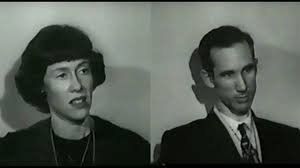 |
| Ruth & Michael Paine |
Towards the end of the summer, Ruth Paine picked up Marina to be with her when she delivered her second child in Dallas. This is when the Oswalds separated and Marina moved in with Ruth in Irving, Texas. It is in her garage that Lee Oswald stored many of his belongings. Ruth Paine’s roles in Lee Oswald’s demise were varied and numerous. She helped Oswald get his job in the Texas School Book Depository. Her garage became the go-to place to find convenient, and often suspicious, clues linking Oswald to the murder. She would go on to become one of the Warren Commission’s most important witnesses. In fact, she was asked more questions than any other single person.
Michael Paine might have played perhaps as important a role. A suspicious event involving the Paines occurred on the day of the assassination. At 1:00 pm on November 22, 1963, Michael Paine placed a collect call to his wife to discuss Oswald's involvement in the assassination. While the telephone operator remained on the line, Michael Paine told his wife that he “Felt sure Lee Harvey Oswald had killed the President but was not responsible.” Rather ominously he added, “We both know who is responsible.” (FBI report of Robert C. Lish, November 26, 1963, JFK Document No. 105-82555-1437) The most extraordinary thing about this call is that it took place one hour before Oswald's arrest. For obvious reasons, the Warren Commission wanted to sweep this little problem under the rug. So when junior counsel Wesley Liebeler questioned Michael about the call, he stated the date of the call as November 23rd, giving Michael an easy way to deny its implications.
According to a report written by Dallas Deputy Sheriff Buddy Walthers on the day of the assassination, upon searching Paine's garage, officers found “a set of metal file cabinets that appeared to be names and activities of Cuban Sympathizers.” (19H520). These metal file cabinets did not make it onto the Dallas Police inventory sheets and were never entered into evidence alongside Lee Harvey Oswald's belongings. By the time the Warren Commission got them, they had been reduced in number and attributed to Ruth Paine. And if Ruth and Michael Paine had a “set of metal file cabinets” containing “the names and activities of Cuban sympathizers”, then they were most certainly involved in the same intelligence activities that most researchers believe Oswald was involved in during the summer of 1963: rooting out “Un-Americans”.
Here is how long-time researcher Jim DiEugenio interprets these findings:
This cinches the case that the Paines were domestic surveillance agents in the Cold War against communism. (Hancock notes how the Warren Commission and Wesley Liebeler forced Walthers to backtrack on this point and then made it disappear in the "Speculation and Rumors" part of the report.)
The Paines were painted as Good Samaritans by the Warren Commission. Kept hidden were their eyebrow-raising associations with intelligence, beginning with their links to Russian expatriates. To begin with, the father of a witness who vouched for their character, Frederick Osborne Jr., was a close associate of Allen Dulles. Allen Dulles’ mistress was Mary Bancroft. Her best friend, Ruth Forbes Young, was the mother of Michael Paine. Forbes’ husband Arthur Young was one of the creators of Bell Helicopter where Michael worked and had a security clearance. Arthur Young also had worked for the CIA-linked Franklin Institute. Michael’s grand-uncle Cameron Forbes sat on the board of United Fruit with the members of the Cabot family. United Fruit was an important client of the Sullivan and Cromwell law firm where the Dulles brothers were partners. Michael’s cousin Thomas Cabot was United Fruit’s former president. Thomas’ brother John exchanged information with attorney Maurice Gatlin (who links up closely with Guy Banister) to help the overthrow of Jacob Arbenz of Guatemala.
In April 1963, some students at Southern Methodist University identified Michael Paine as a person who regularly would visit Luby’s Restaurant, a popular college hangout. While there he tried to root out those with Castro sympathies. In his pitch, he brought up his links to a communist-Marine who came back from Russia with a Russian bride.
Ruth Paine’s father William Hyde had worked for the OSS in World War II and stayed connected with the CIA later on through his work for the Agency for International Development (AID), which was infested with CIA operatives. Before picking up Marina in New Orleans, she had paid a visit to her sister who worked for the CIA. This is something that Ruth seemed intent on keeping from Jim Garrison in her appearance before the Clay Shaw grand jury. Her brother-in-law also worked for AID. Ruth seemed to have a penchant for weeding out communists as, later in her life, she is alleged to have played a role in identifying Americans who opposed U.S. policy when she was in Nicaragua during the Contra war.
James Hosty (Destiny Betrayed – Oswald and the CIA)
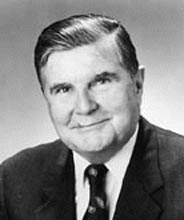 |
| James Hosty |
March 1963 is when FBI agent James Hosty was asked to monitor the Oswalds in Dallas. He lost track of Lee Oswald when he moved to New Orleans. By November 1st, he had interviewed Ruth Paine and Marina in order to locate him. When Oswald found out about this, he left Hosty a note in an envelope at the FBI office in Dallas. What was on the note is still unclear. When Oswald was assassinated, Hosty’s boss Gordon Shanklin ordered him to destroy the note and Hosty’s memorandum about the event. Hosty’s name was in Oswald’s address book, something the FBI kept hidden from the Warren Commission.
This created great consternation when it was publicly disclosed in the seventies. Hoover had been very worried that Oswald’s possible role as an informant who infiltrated the Fair Play for Cuba Committee would blow up in the FBI’s face. Based on Oswald’s links to New Orleans FBI agents, which will be reviewed later, this role seems more than plausible.
Hosty was also present during Oswald’s interrogations after Kennedy’s murder. Hosty took heat for the security lapse that allowed someone like Oswald to be present on the infamous motorcade route in Dallas.
Return to New Orleans, Mexico, Return to Dallas
Victor Thomas Vicente
In the article The Three Failed plots to Kill JFK, the author shows how Oswald’s starting a Fair Play for Cuba Committee Chapter in New Orleans was more likely part of a covert operation than his demonstration of bonding with Marxism. By then the FPCC was infested with informants and linked closely to infiltration and sabotage programs overseen by prominent CIA operatives David Atlee Phillips, James McCord and William Harvey.
When Lee Harvey Oswald wrote his first letter to the Fair Play for Cuba Committee HQ in New York in April 1963, he asked for “forty to fifty” free copies of a 40-page pamphlet.
The author of the pamphlets, Corliss Lamont, turned out to be holding a receipt for 45 of these pamphlets from the CIA Acquisitions Division. These pamphlets were mailed to Oswald by FPCC worker Victor Thomas Vicente. Vicente was a key informant for both the CIA and the FBI’s New York office.
Novo Sampol brothers, Tony Cuesta, Orlando Bosch, Luis Posada (JFK: The Cuba Files)
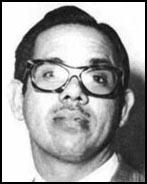 |
| Orlando Bosch |
The CIA and FBI were not the only intelligence agencies tapping into Cuban exiles living in the U.S. Cuban Intelligence also had their share of informants. Fabian Escalante was put in charge of Castro’s security and later became Head of State Security. He directed the investigations that the Cuban government carried out at the request of the U.S. Select Committee of the House of Representatives. He also wrote a book called JFK: The Cuban Files. Having read the book, I was struck by how cautious he was in talking about potential leads.
Here are some of the people of interest who met Oswald according their files and analysis. By mid-1963 there was a meeting between Oswald and group of terrorists in a CIA safe house on the outskirts of Miami. Also present were:
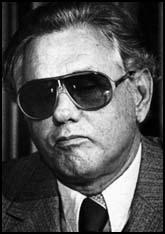 |
| Tony Cuesta |
Orlando Bosch who among other things participated in the downing of a Cuban airliner, for which he was eventually incarcerated, and the murder of Chilean ambassador Orlando Letellier. He was considered such a threat to JFK that the Secret Service had him under special surveillance during JFK’s visit to Miami in November, 1963. According to Gaeton Fonzi, Antonio Veciana considered him a good friend.
Tony Cuesta was a higher-up in Alpha 66 and a close colleague of Veciana. He was indicated by Richard Case Nagell as a suspect in the assassination. He also confessed to Escalante his role in the assassination after being captured during a failed raid in 1966. He identified Herminio Diaz and Eladio Del Valle (a key suspect of Garrison) as conspirators.
The Novo brothers, Posada and Bosch were all allegedly part of team of assassins called Operation 40.
John Martino (Someone Would Have Talked)
From Larry Hancock we learned about another person who may have crossed paths with Oswald:
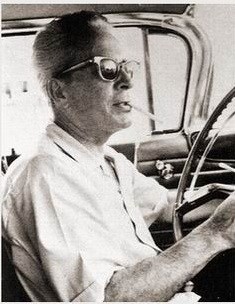 |
| John Martino |
Martino certainly did have CIA connections in 1963, primarily (David) Morales and Rip Robertson …
John Martino had pre-knowledge of the plan to kill John Kennedy in Texas. John Martino “talked” in a very believable and credible fashion. At first, he talked only to his immediate family, nervously, hesitantly, and excitedly. Shortly before his death, he talked with two long time friends –– part confession and part simply recollection. He made no grand claims, downplayed his own role and limited his statements to things he would have personally come in contact with in playing the role he described with the Cuban exiles whose cause he was demonstrably devoted to at the time. His story is certainly consistent and totally in context with his documented activities and personal associations in 1963.
Martino also admitted observing Oswald during the summer of 1963.
William Monaghan and Dante Marichini (Deep Politics)
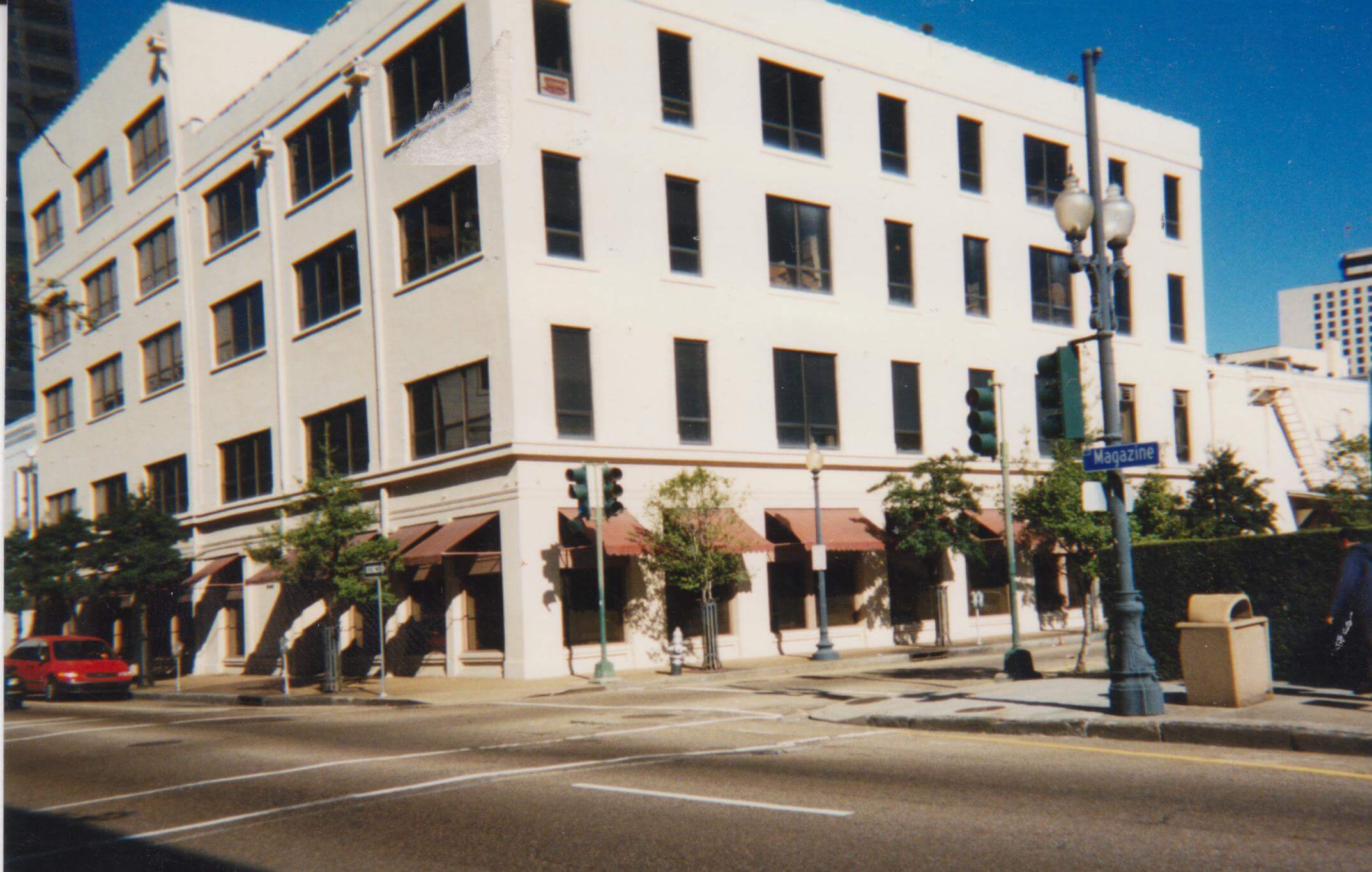 |
| Reilly Coffee Co. |
During the summer of 1963 in New Orleans, Oswald gained employment at the Reilly Coffee Company, an organization of interest because of its links to Caribbean anti-communist politics. The Reilly brothers backed Ed Butler’s INCA (the CIA-linked Information Council of the Americas which factors heavily in Oswald’s later Marxist PR activities) and the CRC (Cuban Revolutionary Council).
William Monaghan was the V.P. of Finance there who ended up firing Oswald. He was also an ex-FBI agent. He was listed as a charter member of INCA in a 1962 bulletin. He is believed by some to have played a role in the friendly hosting of Oswald at Reilly’s during his covert Intel-linked mission.
Other employees there of interest to researchers included four of Oswald’s co-workers who joined NASA during the summer of 1963. Dante Marichini who was a friend of David Ferrie’s and the neighbour of Clay Shaw was one of these.
Guy Banister (Destiny Betrayed – Jim Garrison – Ed Haslam – Spartacus – How JFK was killed)
FBI investigators did not take Jim Garrison’s suspicions about David Ferrie seriously. Garrison had turned over Ferrie because of his incriminating behaviour on the day of the assassination. The FBI then let Ferrie get away with numerous lies during their questioning of him. If they had not done so, they would have been able to link Oswald to a network of informants, CIA-backed anti-Castro Cuban exiles and other intelligence assets who had in common their hatred of Castro and, by then, Kennedy. This violent, right-wing hub of anti-Castro activity just happened to be where Oswald set up shop for his Fair Play for Cuba Committee office, which became central in his renewed relationship with Ferrie and Thornley and the development of new contacts like Sergio Arcache Smith, Carlos Quiroga, Frank Bartes, Clay Shaw, Carlos Bringuier, Guy Banister and who knows who else. It is no wonder the Warren Commission investigators and pro-lone-nut mouthpieces have felt extremely uncomfortable about Oswald’s flyers with the 544 Camp Street address on them.
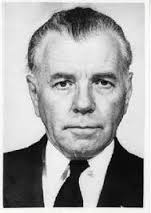 |
| Guy Banister |
Garrison’s investigation led him to this nest of anti-Castro intelligence activity that was at the antipode of Oswald’s new found pro-Castro hobby. Over and above working in very close proximity to one another and Banister’s close ties to Ferrie, proof that Banister and Oswald were working together is overwhelming:
- An important number of Banister’s colleagues confirmed seeing Oswald with Banister and other persons of extreme interest.
- Recall that the Banister-linked organization Friends of Democratic Cuba used Oswald’s name while he was in Russia.
- There was evidence in Banister’s files that he kept tabs on Oswald.
- Writer Ed Haslam discovered that Ed Butler, who played an important role in a radio interview of Oswald, kept the deceased Banister’s files hidden. We will get back to Butler later.
Banister’s ties to intelligence are well summed up even in the very early work of Joachim Joesten, How Kennedy Was Killed (1968):
Guy Banister, a former FBI official and onetime assistant superintendent of the New Orleans police department, had had a ‘stormy’ career, according to the New Orleans States-Item of May 5, 1967. After he had left police work officially, if not earlier, Banister was active for years as a top U.S. intelligence agent in the South and in Latin America. His spacious office, at 531 Lafayette Street, in New Orleans, served both as a rallying point for Minutemen, Cuban exiles and assorted right-wing and intelligence operatives and as an arms distribution centre for these elements. This has been brought out with dazzling clarity both by the Garrison investigation and through independent research by the local press.
A close friend and adviser of Banister’s told the States-Item the veteran FBI agent was a key liaison man for U.S. government-sponsored anti-Communist activities in Latin America, the New Orleans paper reported and added: “Guy participated in every important anti-Communist South and Central American revolution which came along while he had the office on Lafayette Street,” the source reported. The paper also stated that Banister is believed to have worked in cooperation with a U.S. military intelligence office here.
What emerges from all of this is that Oswald was assisting Banister, a known communist hunter, in identifying Castro-sympathizers and that Banister was deeply involved in activities supplying weapons to anti-Castro groups like Alpha 66 –– a key organization of interest in the assassination.
Clay Shaw (Jim Garrison – Joan Mellen – Destiny Betrayed)
Thanks to New Orleans district attorney Jim Garrison, we were introduced to a key person of interest in Clay Shaw. For his profile let me quote from a one of my previous articles:
Perhaps no other person who believed there was a conspiracy was vilified more than Jim Garrison. He has been called a charlatan, a publicity-seeker and crazy, among other things. With time however, many of his claims have been vindicated. While some described his case as a farce, it is often overlooked that Garrison had presented his evidence beforehand to a three-judge panel who concluded that he was justified to bring it to court, and that the subsequent HSCA investigation concluded that Garrison and his office “had established an association of an undetermined nature between Ferrie, a suspect in the assassination of President Kennedy, and Clay Shaw and Lee Harvey Oswald” –– a devastating blow to Garrison detractors. Many witnesses have confirmed this.
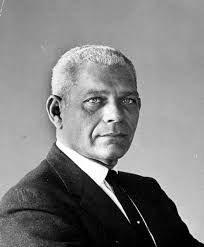 |
| Clay Shaw |
Other information from later investigations reveals that his efforts were sabotaged by adversaries who infiltrated his volunteer team and weakened his efforts; well-orchestrated propaganda attacking both his case and reputation; refusals to his subpoenas for out-of-state witnesses and the harassment, turning and untimely deaths of some of his key witnesses, including the suspicious deaths of star-witness David Ferrie and the murder of Eladio Del Valle. Other irrefutable documentary evidence that began to emerge showed that Clay Shaw, despite his denials, was in fact a CIA asset and part of a CIA organization of interest called Permindex.
In Destiny Betrayed, Jim DiEugenio underscores other Shaw links with the CRC and with Banister, CIA-cleared doctor Ed Ochsner, and Ed Butler, who are all connected to The Information Council of the Americas which appears to have played a role in the sheep-dipping of Oswald (see Ed Butler). He also shows that Shaw was cleared for a project called QK/ENCHANT during the Garrison investigation. Howard Hunt also belonged to this project , which was part of the CIA’s Domestic Operations Division, according to CIA insider Victor Marchetti.
William Gaudet (Destiny Betrayed)
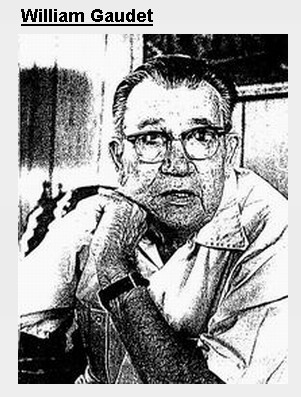 |
| William Gaudet |
Gaudet had worked for the CIA before he crossed paths with Oswald. He most likely continued freelancing for it. He worked virtually rent-free out of Clay Shaw’s International Trade Mart. He told the HSCA that he observed Oswald and Banister talking on a street corner on a number of occasions. Gaudet links up with many in the Banister network.
And then there is this little plum, according to author Anthony Summers: Gaudet … happened to be next in line to Oswald when Oswald applied for his Mexican tourist visa.
It seems plausible that Gaudet played a part in monitoring Oswald, perhaps for the benefit of Clay Shaw.
Dean Andrews (Jim Garrison)
Lawyer Dean Andrews was called by Shaw under the pseudonym Clay Bertrand, and given instructions to represent Oswald, as told by Garrison in his famous interview with Playboy:
A New Orleans lawyer, Dean Andrews, told the Warren Commission that a few months before the assassination of President Kennedy, Lee Harvey Oswald and a group of “gay Mexicanos” came to his office and requested Andrews’ aid in having Oswald’s Marine Corps undesirable discharge changed to an honorable discharge; Oswald subsequently returned alone with other legal problems.
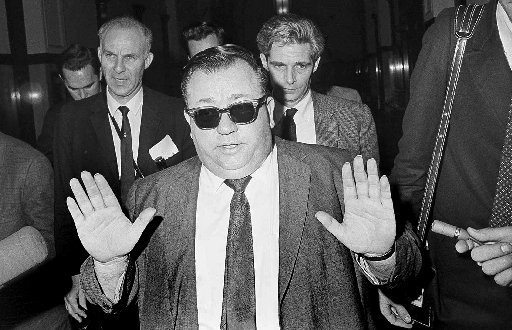 |
| Dean Andrews |
Andrews further testified that the day after President Kennedy was assassinated, he received a call from Clay Bertrand, who asked him to rush to Dallas to represent Oswald. Andrews claims he subsequently saw Bertrand in a New Orleans bar, but Bertrand fled when Andrews approached him. This was intriguing testimony, although the Warren Commission dismissed it out of hand; and in 1964, Mark Lane traveled to New Orleans to speak to Andrews. He found him visibly frightened. “I’ll take you to dinner,” Andrews told Lane, “but I can’t talk about the case. I called Washington and they told me that if I said anything, I might get a bullet in the head.” For the same reason, he has refused to cooperate with my office in this investigation. The New York Times reported on February 26th that “Mr. Andrews said he had not talked to Mr. Garrison because such talk might be dangerous, but added that he believed he was being ‘tailed.’” Andrews told our grand jury that he could not say Clay Shaw was Clay Bertrand and he could not say he wasn’t. But the day after NBC’s special, Andrews broke his silence and said, yes, Clay Shaw is not Clem Bertrand and identified the real Clay Bertrand as Eugene Davis. The only trouble is, Andrews and Davis have known each other for years and have been seen frequently in each other’s company. Andrews has lied so often and about so many aspects of this case that the New Orleans Parish grand jury has indicted him for perjury. I feel sorry for him, since he’s afraid of getting a bullet in his head, but he’s going to have to go to trial for perjury. [Andrews has since been convicted.]
Sergio Arcacha Smith (Destiny Betrayed – Jim Garrison – JFK: The Cuba Files)
Arcacha Smith is considered by many to be one of the leading organizers of the Cuban exiles who probably played a role in the assassination. He is perhaps also the Cuban exile with the most links with suspected participants from the mob, intelligence and business communities. He was sprung from Cuba by New Orleans lawyer Guy Johnson, an Office of Naval Intelligence reserve Officer and friend of both Guy Banister and Clay Shaw. The CIA selected him to be a key leader of Cuban exiles as a representative of the Cuban Revolutionary Council that was created by Howard Hunt as an umbrella organization of many Cuban exile groups such as Alpha 66 and the DRE. It is in this role that he befriended David Ferrie who he worked with in CIA Bay of Pigs training of Cuban exiles. According to Richard Case Nagell, Arcacha Smith, along with his right-hand man Carlos Quiroga, were among those setting Oswald up to take the fall.
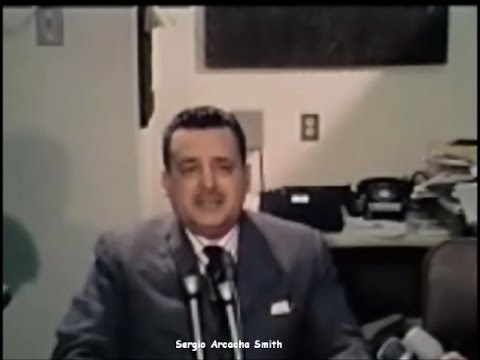 |
| Sergio Arcacha Smith |
When in New Orleans he associated closely with Clay Shaw, Guy Banister, David Ferrie and Doctor Alton Ochsner. Gordon Novel, who later played a role in sabotaging the Shaw trial, claims that David Phillips participated in at least one meeting where Smith and Banister were in attendance. Arcacha Smith helped found the Friends of Democratic Cuba, the organization that borrowed Oswald’s name when he was in Russia and connects Arcacha Smith to Banister, Shaw and Ferrie. Jim Garrison discovered that this group worked closely in sync with New Orleans FBI agents Regis Kennedy and Warren DeBrueys, who were also monitoring Oswald. Jack Martin, who worked for Banister, claimed that he had been introduced to Oswald in the presence of Arcacha Smith.
Arcacha Smith also interacted with mobster Carlos Marcello and oilman H.L. Hunt, who saw him as a good contact for when Cuba would be won back. Cuban intelligence placed him in the top twelve suspects in the conspiracy.
After David Ferrie’s mysterious death, Garrison tried to extradite Arcacha Smith out of Texas for questioning under oath. This was blocked by Texas Governor John Connally, and the world never heard from one of the assassination’s most important witnesses.
Carlos Bringuier, Carlos Quiroga, Celso Hernandez and Frank Bartes (Destiny Betrayed – The Twelve Who Built the Oswald Legend – Spartacus)
Bringuier was part of the DRE, a militant right-wing, anti-Communist, anti-Castro, anti-Kennedy group. Bringuier, based in New Orleans, was placed in charge of DRE publicity and propaganda. According to Bringuier, the following summarizes his strange encounters with Oswald:
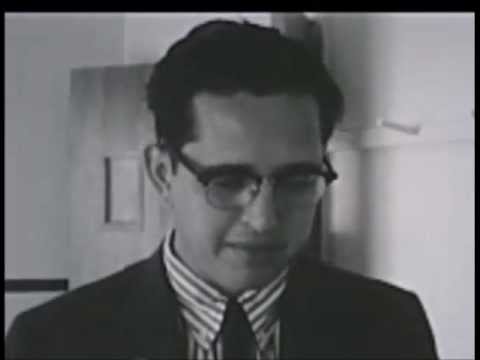 |
| Carlos Bringuier |
On August 5, 1963, Oswald walks into Carlos Bringuier’s shop and starts up a conversation with him about wanting to help in the fight against Castro. Bringuier does not trust him and refuses his help. The next day Oswald drops off a copy of a Marine manual; on August 9. 1963, Oswald, while leafleting FPCC flyers on Canal Street, drew the ire of Bringuier and his Cuban associates Celso Hernandez and Miguel Cruz. Bringuier did the swinging while Oswald tried to block his blows. Within a few minutes all four were arrested for disturbing the peace; Oswald spent the night in jail while the other three were quickly let go; Oswald is then interviewed on a Bill Stuckey show along with Bringuier where his Marxist and FPCC credentials were discussed for all to hear.
Through this episode Oswald’s persona was archived on tape for strategic distribution on the day of the assassination. Bringuier himself wrote up an article that was published the day after the assassination that described this experience which he used as a call to arms against Castro. Oswald had actually described this event on August fourth, before it happened, to the head office of the FPCC, proving that it was staged. Bringuier’s links to intelligence were numerous. According to E. Howard Hunt, the DRE was started by David Phillips, who we will see is the CIA career employee who has the most links with Oswald. The DRE was eventually overseen in 1963 by George Joannides, a fact which was kept hidden from the HSCA when he became the CIA liaison to that committee and directly sabotaged investigation efforts.
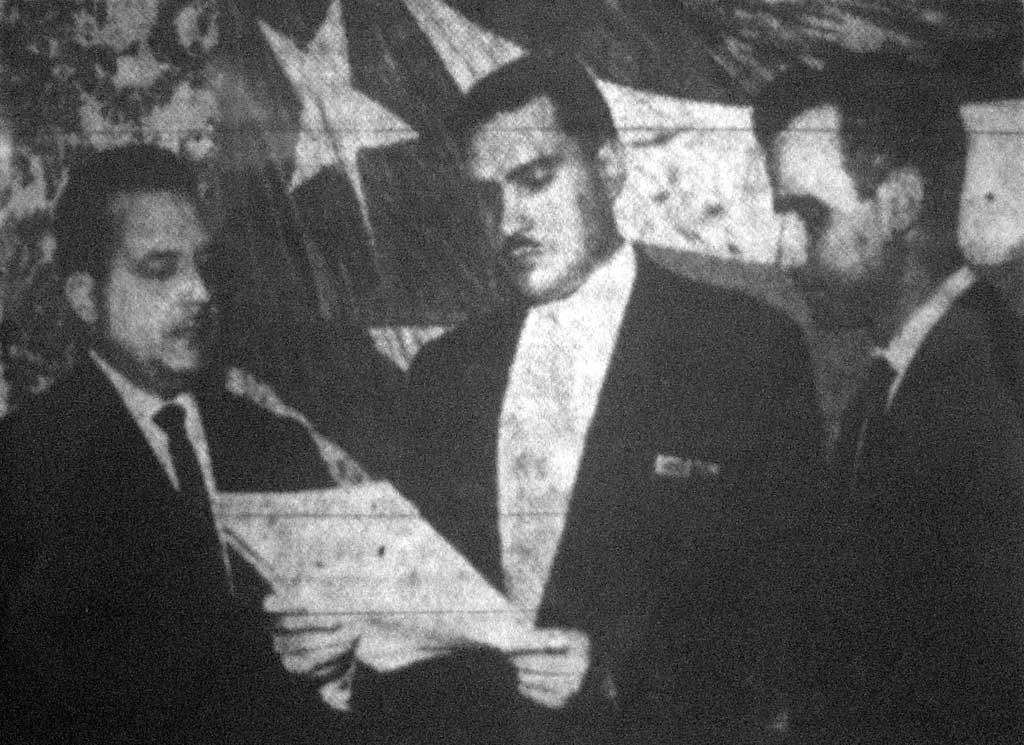 |
| Arcacha Smith, Manuel Gil, & Carlos Quiroga |
According to Richard Case Nagell, a Bringuier colleague who played a role in setting Oswald up as a patsy was Carlos Quiroga. A Jim Garrison polygraphed interrogation of Quiroga and other research proved that Quiroga knew Banister and Sergio Arcacha Smith, had met Oswald more than once, and had supplied Oswald with Fair Play for Cuba literature on the orders of Carlos Bringuier. Quiroga was shown to be lying when he claimed to have met Oswald only once in an attempt to infiltrate the FPCC New Orleans Chapter.
One of the Cuban exiles arrested during the so-called skirmish was Celso Hernandez, who may have met Oswald before. According to Bill Simpich’s research, the CIA examined Celso Hernandez as a Castro penetration agent:
There is an intriguing report of FPCC member Oswald being arrested with Celso Hernandez in New Orleans in late 1962. The ID of Hernandez was made years later and is admittedly shaky. The ID of Oswald is more substantive, as he id’d himself to the police as an FPCC member –– but he was living in the Dallas area. The story is that the two men were picked up at the lakefront in Celso’s work truck, owned by an electronics firm that was Celso’s employer.
The most important thing is that right about this time, Bill Harvey –– who worked both the wiretapping side and the Cuban beat for the CIA during 1962 –– was tipped off on 10/1/62 that Celso Hernandez might be a communist. This kicked off an investigation that revealed in the autumn of 1963 that there was a left-wing Celso and a right-wing Celso, and a brother and sister who couldn’t agree on who was who. Oswald and Celso Hernandez were arrested together again in August 1963. What we do know is that throughout this era, Hernandez was under close scrutiny as a possible pro-Castro infiltrator.
While Oswald and Bringuier were in court after their altercation, a sympathizer and friend of Bringuier’s, Frank Bartes showed up to offer moral support. This Cuban exile went on to conduct anti-Castro press relations.
Bartes just happened to be the CRC leader of New Orleans based in a building near Banister. He was suspected of holding meetings later on Camp Street, with perhaps Oswald present and other persons of interest like Sergio Arcacha Smith. While this is mind-boggling enough, in 1993 the ARRB released files confirming that Bartes was an informant to the FBI agent who just happened to be monitoring Oswald, Warren DeBrueys.
(Author’s comment: This takes the cake!)
Jesse Core (Destiny Betrayed)
Core was Clay Shaw’s right-hand man who was present during the incident on Canal Street and Oswald’s leafleting near the Trade Mart. He contacted Shaw’s friends at WDSU TV. He also is the one who warned his team about the blunder by Oswald of placing Banister’s address on some of the literature he was handing out.
John Quigley and Warren DeBrueys (Destiny Betrayed – Joan Mellen – Sylvia Meagher)
After the altercation with Bringuier, it was New Orleans police Lieutenant Frank Martello who questioned Oswald first. The Warren Commission seemed to dismiss his testimony that Oswald: “… seemed to have set them up, so to speak, to create an incident …”.
While under arrest, Oswald made a bizarre request. He asked to see an FBI agent. One would think a true Marxist/FPCC recruiter would want to avoid such an encounter at all costs. It’s more likely that Oswald knew he would be joined by a friendly party he could pass on information to and who might spring him from jail without him having to pay bail. Just as interesting, the FBI sent agent John Quigley, who spent between ninety minutes and three hours with Oswald. It’s safe to say that they were not discussing Bringuier simply being mean to the alleged communist.
Quigley stated that Martello told him that Oswald wanted to pass on information about the FPCC to him. Joan Mellen’s research finds that Oswald actually asked specifically for Warren DeBrueys. DeBrueys, who ran Bartes as an informant, would further nail down the real reason Oswald started an FPCC chapter in a hostile place like New Orleans. William Walter, an employee at the New Orleans FBI office, claimed to have seen an FBI informant file of Oswald with DeBrueys’ name on it.
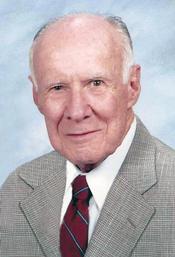 |
| Warren DeBrueys |
Coupled with the communist witch-hunts taking place out of Banister’s office, the FBI and CIA FPCC penetration operations that were in full-swing, and the fact that Quigley’s colleague, Warren DeBrueys, was in charge of monitoring the New Orleans FPCC chapter –– whose one and only member was Oswald –– it is only normal that this event has been interpreted by many as an intelligence officer interacting with an informant. The same informant who was helping Banister and would later give a note to Dallas FBI agent James Hosty that was so provocative that Hosty was asked to destroy it, and which became an explosive topic for the Church Committee.
In his questioning of DeBrueys, Schweiker clearly showed disbelief in Oswald the communist having a Camp Street address for his FPCC activities, something the FBI agent fluffed off by saying that perhaps Oswald had a sense of humor.
Arnesto Rodriguez (Joan Mellen)
The number of links between DeBrueys and Oswald are to say the least impressive. For our next Oswald intel contact let us return to a Joan Mellen essay:
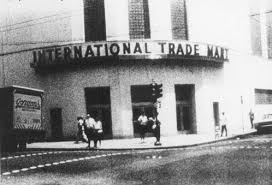 |
| 124 Camp Street |
Supporting the conclusion that the CIA was behind the Kennedy assassination is the fact that in New Orleans Oswald associated only with people with intelligence connections, beginning with Arnesto Rodriguez, an FBI informant with family members rooted in the CIA’s clandestine services. Rodriguez was one of FBI Special Agent Warren DeBrueys’ informants. One day Oswald appeared at Rodriguez’s office at the International Trade Mart building at 124 Camp Street. He wanted to help the Cubans, Oswald said. He wanted to be part of the training camps. Rodriguez was suspicious. Who had sent Oswald to him? he wondered. How did Oswald know that there was “a training camp across the lake from us, north of Lake Pontchartrain?” It was top secret at the time, yet Oswald knew about it.
Author’s Note: This writer does not agree at this point that this gives evidence that the CIA, as an organization, was behind the assassination. The relationships indicated here show so far that Oswald was linked to intelligence-related covert activities (such as infiltrating the FPCC to discredit it or to identify Castro sympathizers or to gain eventual entry into Cuba.)
Orestes Pena, Joseph Oster, David Smith, Juan Valdes and Wendell Roache (Bill Simpich)
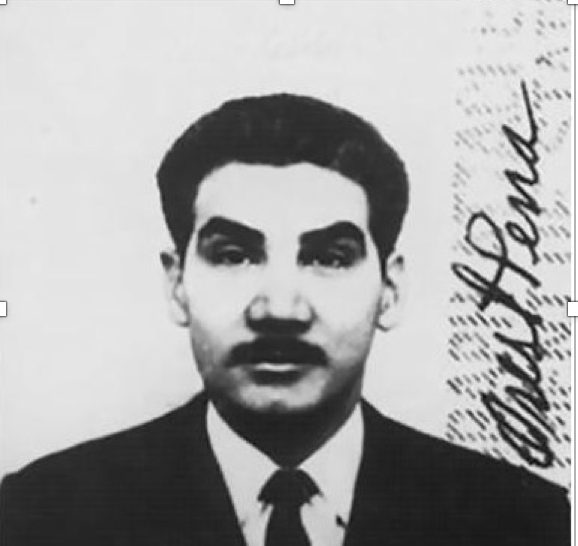 |
| Orestes Pena |
DeBrueys’ relationship with Oswald reaches a whole other dimension of intensity according to another one of his informants, Orestes Pena. He also connects Oswald with Customs and the INS. Relying on Church Committee testimonies, Bill Simpich wrote the following in the Twelve Who Built the Oswald Legend part 9:
Curiously, the evidence that Oswald collaborated with Customs is stronger than with any other agency. Cuban exile Orestes Pena testified that he saw Oswald chatting on a regular basis with FBI Cuban specialist Warren DeBrueys, David Smith at Customs, and Wendell Roache at INS. Pena told the Church Committee that Oswald was employed by Customs. Informant Joseph Oster went farther, saying that Oswald’s handler was David Smith at Customs. Church Committee staff members knew that David Smith “was involved in CIA operations.” Orestes Pena’s handler Warren DeBrueys admitted he knew David Smith. Oswald was also frequently seen with Juan Valdes, who described himself as a “customs house broker”.
Orestes Pena also claimed that DeBrueys, who admitted arguing with Pena, tried to intimidate him with respect to what he had witnessed.
Ed Butler and Bill Stuckey (Destiny Betrayed – Ed Haslam)
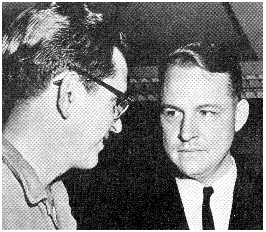 |
| Carlos Bringuier with Ed Butler |
Ed Butler was the director of INCA, the Information Council of the Americas, a right-wing, CIA-associated propaganda outfit. Doctor Alton Ochsner and the Reilly Coffee Company were among its chief sponsors.
The Canal Street incident led to Oswald being part of a debate on WDSU reporter Bill Stuckey’s weekly radio program called Latin Listening Post. Later, Butler and Carlos Bringuier were also invited to debate Oswald about his Marxist views on a show called Conversation Carte Blanche. Stuckey claimed that his show helped destroy the FPCC in New Orleans. It is during this show that Oswald let slip that he was under the protection of the government while in Russia.
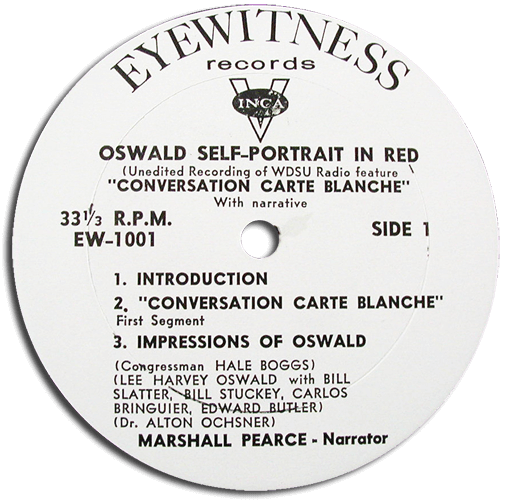 |
| INCA - WDSU "Conversation Carte Blanche" |
Both Butler and Stuckey were briefed in advance about Oswald’s defection to Russia: Stuckey by the FBI, Butler by the House Unamerican Activities Committee (HUAC). Therefore they were able to ambush Oswald and expose him as a Soviet defector, which compromised his debate position as one who desired “fair play” for Cuba. The records of this show were used immediately after the assassination (through Butler and Bringuier) to paint Oswald as the lone-nut Marxist. In fact, Butler was flown up to Washington within 24 hours to talk to the leaders of the HUAC.
Ed Butler is also the one who helped link Gordon Novel to Arcacha Smith and David Phillips. According to author Ed Haslam, he also became the secret custodian of Banister’s files years after his death.
Leopoldo and Angel (HSCA – Dick Russell – Joan Mellen – Larry Hancock)
Before commenting on our next two intelligence-linked Oswald contacts, let us review how they may have been involved in the Sylvia Odio incident as described by the HSCA:
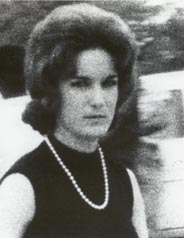 |
| Silvia Odio |
The Commission investigated (Mrs. Odio’s) statements in connection with its consideration of the testimony of several witnesses suggesting that Oswald may have been seen in the company of unidentified persons of Cuban or Mexican background. Mrs. Odio was born in Havana in 1937 and remained in Cuba until 1960; it appears that both of her parents are political prisoners of the Castro regime. Mrs. Odio is a member of the Cuban Revolutionary Junta (JURE), an anti-Castro organization. She testified that late in September 1963, three men came to her apartment in Dallas and asked her to help them prepare a letter soliciting funds for JURE activities. She claimed that the men, who exhibited personal familiarity with her imprisoned father, asked her if she were “working in the underground,” and she replied that she was not. She testified that two of the men appeared to be Cubans, although they also had some characteristics that she associated with Mexicans. Those two men did not state their full names, but identified themselves only by their fictitious underground “war names.” Mrs. Odio remembered the name of one of the Cubans as “Leopoldo.” The third man, an American, allegedly was introduced to Mrs. Odio as “Leon Oswald,” and she was told that he was very much interested in the Cuban cause. Mrs. Odio said that the men told her that they had just come from New Orleans and that they were then about to leave on a trip. Mrs. Odio testified that the next day Leopoldo called her on the telephone and told her that it was his idea to introduce the American into the underground “because he is great, he is kind of nuts.” Leopoldo also said that the American had been in the Marine Corps and was an excellent shot, and that the American said the Cubans “don’t have any guts … because President Kennedy should have been assassinated after the Bay of Pigs, and some Cubans should have done that, because he was the one that was holding the freedom of Cuba actually.”
Because this story was corroborated by her sister, and Odio had talked to others about it before the assassination and remained consistent throughout the years, the HSCA concluded that she was credible:
It appears that Silvia Odio’s testimony is essentially credible. From the evidence provided in the sworn testimony of corroborating witnesses, there is no doubt that three men came to her apartment in Dallas prior to the Kennedy assassination and identified themselves as members of an anti-Castro Cuban organization. From a judgment of the credibility of both Silvia and Annie Odio, it must be concluded that there is a strong probability that one of the men was or appeared to be Lee Harvey Oswald. No conclusion about the significance of that visit could be reached. The possibilities were considered that Oswald actually had some association with JURE, the anti-Castro group headed by Manolo Ray, and that Oswald wanted it to appear that he had that association in order to implicate the group, politically a left-of-center Cuban organization, in the Kennedy assassination.
Some researchers interpret the goals of this highly incriminating, Warren-Commission-debunking incident as 1) a further attempt to sheep-dip Oswald as anti-Kennedy and 2) a ploy to link the Cuban exile group JURE that Odio was connected to with Oswald. For the Kennedys seemed to favor this left-leaning organization over others that were much closer to the intelligence networks. Richard Case Nagell revealed that Leopoldo and Angel were war names for two Cuban exiles who had also, in the spring of 1963, looked into the possibility of setting up an executive of the Los Angeles chapter of the FPCC called Vaughn Marlowe.
Joan Mellen’s research has led her to believe that they were Cuban exiles Angelo Murgado and Bernardo De Torres.
Angelo Murgado and a fellow veteran of the Bay of Pigs, in September, were the men who traveled with Oswald from New Orleans to Dallas where they visited Sylvia Odio. (Mrs. Odio testified that the three traveled together although Angelo says that when he and Leopoldo, who drove from New Orleans together, arrived at Sylvia Odio’s, Oswald was already there, sitting in the apartment. That “Leopoldo” and Angelo both knew Oswald, there is no doubt) ...
“Leopoldo” was Bernardo de Torres, who testified before the HSCA with immunity granted to him by the CIA, so that he was not questioned about the period of time leading up to the Kennedy assassination, as the CIA instructed the Committee on what it could and could not ask this witness. Both the Warren Commission and the HSCA buried the anti-Castro theme, and never explored what Bobby Kennedy might have known.
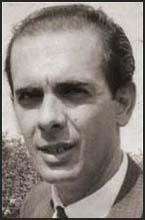 |
| Bernardo De Torres |
Although her conclusion, to put it mildly, is not shared by all pro-conspiracy researchers, many do consider them –– especially De Torres –– to be persons of interest in the JFK assassination. De Torres’ ties to the CIA were later confirmed by his daughter. Larry Hancock in Someone Would Have Talked identifies other key links: De Torres is known to have associated with several of Hemming’s Interpen members and he was well acquainted with Frank Fiorini/Sturgis. De Torres also had strong operational contacts in Mexico City all the way up to Miguel Nazar Haro in Mexican police intelligence. Haro was later revealed as a key individual in drug trafficking into the U.S. and has been associated with both Sam Giancana and Richard Cain. An FBI report on De Torres from the 1970’s refers to his “high level contacts” with the CIA, but this is otherwise unsubstantiated (unexplained is perhaps a better description).
After the assassination, De Torres infiltrated the Garrison investigation and played a key role in messing up his efforts. In 1977, the HSCA came to believe that he may have played a role in the assassination: “De Torres has pictures of Dealey Plaza in a safe-deposit box,” a HSCA report states. “These pictures were taken during the assassination of JFK.”
Sylvia Duran and Eusebio Azcue (State Secret – The Lopez Report)
Duran worked at the Cuban Consulate in Mexico City and received “Oswald” on September 27th 1963 when he talked about his plans to visit Cuba and then move to the Soviet Union and asked for a visa. She was suspicious of him and instructed him to go through the Russian embassy instead. It is during this episode that the CIA Mexico City station used imposters to create phoney telephone calls between a fake Oswald and workers at the Russian embassy exchanging compromising information that could be used to position Oswald as a communist assassin who had received help from either the Cubans, Russians or both.
 |
| Silvia Duran |
Suspiciously, the CIA could not produce any photos of Oswald’s five entrances and exits as surveyed by their cameras. They claim that these were all out of order during the two days of Oswald’s visits. David Phillips lied under oath to HSCA Chief Counsel Richard Sprague by claiming that the tapes of these calls had been recycled. It was proven that several investigators had heard at least one recording on the weekend of the assassination. They confirmed that the voice on the tape had survived and was not Oswald’s. This impersonation, followed by the obfuscation, is one of the most important choke points in the whole case.
After the assassination, Sylvia Duran was picked up by Mexican police, on order of Win Scott –– chief of the Mexico City station, and forcefully interrogated. The CIA had been monitoring her and knew she had an affair with Cuban ambassador to the United Nations Carlos Lechuga. Furthermore, through a made-up story by CIA operative June Cobb, Duran was accused of have had a fling with Oswald.
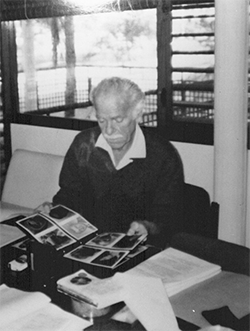 |
| Eusebio Azcue |
It is believed that the CIA had perhaps even recruited Duran according to the Lopez Report: “… the circumstantial evidence tends to indicate that Duran had a relationship with Mexican or American intelligence [and] cannot be dismissed.”
Eusebio Azcue, a co-worker of Duran, also met “Oswald” when he was in the office. Curiously, he described him as short and blond, which corresponds to Cuban photograph of the visitor. In State Secret, Bill Simpich makes the argument that Azcue may have been a CIA-linked case officer of another FPCC-related potential patsy called Santiago Garriga who would have penetrated the FPCC for Bill Harvey while David Phillips was running the FPCC monitoring and discrediting project called AM/SANTA.
Antonio Veciana (Dick Russell – JFK: The Cuban Files – Gaeton Fonzi)
For our next person of interest let us refer to renowned researcher Dick Russell, who was one of the first to interview Veciana (From “Interview with an assassin”):
Alpha 66’s Cuban leader Antonio Veciana claimed that at one of his hundred or so meetings with Bishop, Oswald was there. “I always thought Bishop was working with Oswald during the assassination,” Veciana told Russell. Veciana’s cousin worked for Castro’s intelligence service and after the assassination Bishop wanted Veciana to bribe his cousin into saying that he met with Oswald, in order to fabricate an Oswald-Castro connection.
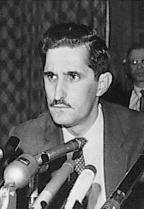 |
| Antonio Veciana |
Investigators never established for sure that Bishop and Phillips were one and the same, but descriptions of Bishop’s appearance and mannerisms mirrored Phillips’. Veciana drew a sketch of his old controller and Senator Richard Schweiker, a member of the assassination committee, recognized it as Phillips.
When the select committee’s star investigator Gaeton Fonzi finally brought Veciana and Phillips together, the two started acting weird around each other. After a short conversation in Spanish, Phillips bolted. Witnesses to the encounter swear that a look of recognition swept Veciana’s visage, but Veciana denied that Phillips was his case officer of more than a decade earlier.
Veciana’s reluctance to make the ID, Fonzi theorized, was related to two unfortunate events that had befallen him of late: one, he was convicted of running drugs and suspected that Bishop set him up to silence him; two, he was shot in the head. Veciana’s desire to clear his drug rap and avoid absorbing another bullet may have had something to do with the fact that he would not rat on his old benefactor.
Fonzi was proven right posthumously by a letter Veciana sent to his widow Marie, interviews Veciana gave and a book he has since written confirming that Bishop and Phillips were one and the same. Schweiker did not find Phillips’ denials of knowing Veciana credible; he was unconvinced by this evidence. He found it difficult to believe Phillips would not have known the leader of Alpha 66. Especially as Phillips had been in charge of covert action in Cuba when Alpha 66 was established. Another CIA agent who worked in Cuba during this period claimed that Phillips used the code name Maurice Bishop.
According to Veciana, after the assassination, Phillips tried to convince him to get a relative of his in Mexico City to claim he had seen Oswald receiving money from Castro agents.
(Author’s comment: Because Alpha 66 was the most active and reliable Cuban exile group involved with Castro assassination attempts; because Richard Case Nagell and Cuban intelligence leader Fabian Escalante both fingered Tony Cuesta, another Alpha 66 higher-up, as having been involved in the assassination; and because it is difficult to believe that Phillips would let himself be seen with Oswald by non-participants in a plot; and because of reports of Oswald being present in a Dallas Alpha 66 safe-house, and because of Oswald’s probable links to other prominent people in the Cuban exile community such as Orlando Bosch, this author wonders what other details could be brought forward by Veciana.)
David Phillips
Out of all the CIA-linked people that crossed paths with Oswald, Phillips is perhaps the most important. Because of his rank and the multi-faceted way he links with Oswald beyond the Veciana reports, as well as the government investigators belief of Veciana, this author has reserved a special section to cover this highly revealing relationship that most historians do not even have a clue about. They are not aware of what people like Richard Schweiker came to believe, because they are frozen in the Warren Commission era which set in motion what has been perhaps the U.S.’s worst case ever of perpetuated “Fake News” and Fake History.
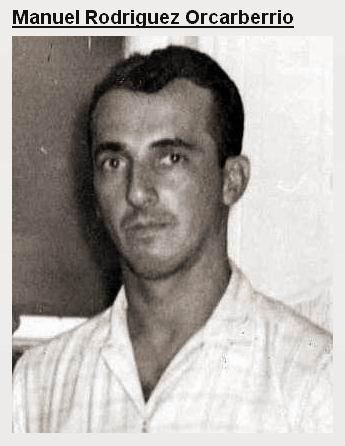 |
| Manuel Orcarberrio |
Manuel Rodriguez Orcarberrio (JFK: The Cuban Files)
According to Escalante, Alpha 66 opened a chapter managed by Orcarberrio in Dallas in September 1963 on Harlendale Street, where Oswald was seen a few days before the crime by an informant of Dallas Deputy Sherriff Buddy Walthers.
Pedro Charles and friends (JFK: The Cuban Files)
One rarely discussed subject about the assassination are the letters from Cuba sent to Oswald, media outlets and Robert Kennedy which were received or intercepted shortly after the murder. A “Pedro Charles” (probably a fictitious name) signed one of these letters and is referred to in another as a Castro agent. These letters suggested that Oswald was being assisted by Cuban agents. The FBI found that, though different people signed off on some, they were written from the same typewriter and concluded they were a hoax perhaps perpetrated by anti-Castro rebels in Cuba hoping to encourage a show-down with the U.S.
Cuban Intelligence had a different take on this mystery. They found it resembled the Mexico City disinformation tactics used by David Phillips and concluded that it was an intelligence operation. Indeed, the letters refer to Oswald’s travels to Dallas, Mexico City, Houston and Miami which would have been known to very few people at the time the letters were sent (“franked” from November 23rd to November 30th). Also analyzed was the Cuban postal system, which presented severe logistical problems around the dates the letters were written, franked and received and were never explained in U.S. investigations.
John Hurt (Dr. Grover B. Proctor, Jr.)
On Saturday night November 23rd Oswald placed a call that even the head of the HSCA described as very troublesome. Doctor Grover B. Proctor, Jr. wrote a comprehensive article about that phone call. It shows that Lee Oswald tried to make a phone call on Saturday night that the Secret Service did not allow to go through. Proctor then investigated why:
Surell Brady, a Senior Staff Counsel for the House Select Committee on Assassinations (HSCA), summarized Mrs. Treon’s version of events this way:
Mrs. Treon stayed on the line. She said she was therefore able to hear everything Oswald said and she is sure he asked for the name John Hurt and gave the two numbers. She said that as she listened she wrote the information down on a regular telephone call slip. However, since Mrs. Swinney actually handled the call, Mrs. Treon signed her [Mrs. Swinney’s] name to the slip she intended to keep as a souvenir. She said the notations on the slip of “DA” and “CA” stand for did not answer and cancelled, because the call was never actually put through. Mrs. Treon said she never retrieved any paper from the wastebasket on which Mrs. Swinney supposedly entered the information.
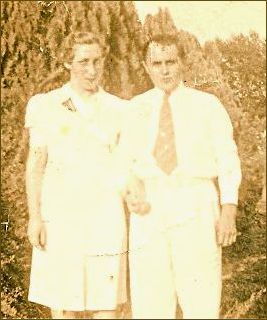 |
| Billie & J. D. Hurt |
Had Mrs. Treon not kept the LD call slip that she filled out as a souvenir, this story would be no more than the most minor of footnotes in the tragedy of the Kennedy Assassination. However, years later, when the identity became known of the man to whom Oswald was trying to place a call, its significance would rise to the “very troublesome” and “deeply disturbing” levels ascribed to it by HSCA Chief Counsel Blakey.
Grover goes on to write:
What Mrs. Treon recorded for history on her LD slip is that Lee Oswald requested to call a “John Hurt” in Raleigh, North Carolina. But what would become important is the fact that the John Hurt who had the first phone number on the slip was a former Special Agent in U.S. Army Counterintelligence. In short, Oswald attempted to place a call from the Dallas jail to a member of the American Intelligence community on Saturday evening, November 23, 1963, but was mysteriously prevented from completing the call.
Jack Ruby and Robert McKeown (John Armstrong website)
As we can see, the claim that Oswald was a loner with no ties with intelligence agencies is one of the largest deceptions put forth by the Warren Commission. The description of his murderer by the Warren Commission as another deranged person with no mob ties comes very close. For example, the phone calls that he was part of in the weeks leading up to the murder and that were analyzed by the HSCA revealed a frenzy of communications with known mobsters.
- His first visitor when he was jailed was Dallas head-mobster Joe Campisi.
- His idol and acquaintance Lewis McWillie was a mobster who became an associate of Mafia Don Santos Trafficante and Meyer Lansky, leaders in the CIA-mob alliance to take out Castro.
- There is strong evidence that Ruby visited Trafficante when the latter was in a Cuban jail and that he tried to free him.
The use of known-mobsters by the Warren Commission to vouch for Ruby not being linked to the mob is not re-assuring to say the least.
Ruby’s ties to the mob are what got Robert Blakey, head of the HSCA, to write a book about organized crime being behind the assassination.
 |
| Ruby at press conference |
Did Jack Ruby cross paths with Oswald before he stalked him during his weekend in jail? According to reporter Dorothy Kilgallen, who interviewed Ruby after he was arrested, at least ten people signed affidavits saying they saw Ruby with Oswald. She claimed that she was going to blow the lid off the case before dying mysteriously.
During a press conference by Dallas attorney Henry Wade, where he claimed that Oswald was part of the Free Cuba Committee, it was Ruby masquerading as a journalist who corrected him by saying it was the Fair Play for Cuba Committee.
John Armstrong is the researcher who has done the most investigation on the case of two Oswalds, one he calls Harvey (the patsy) and the other Lee. It is known that Oswald was often times impersonated. He presents the case that while Harvey was in New Orleans, Lee was a frequent client in Ruby’s Carousel Club.
Another link between Oswald and Ruby comes through their interactions with a gun smuggler and friend of Castro. Robert McKeown, who had been jailed for these activities, at one time got a call from Ruby who tried to use these ties in his efforts to convince the Castro regime to free Trafficante. McKeown did not want to get involved.
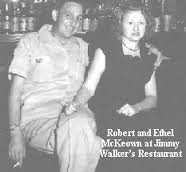 |
| Robert McKeown |
In his website-article, Armstrong describes this stunning event: Robert McKeown watched as a car arrived, parked, and two men got out and walked toward his home. One of the men introduced himself to McKeown as Lee Oswald, and said that he wanted to purchase rifles. McKeown, who was still on a 5-year probation for selling arms, refused to sell guns to Lee Oswald. The two men left but returned a few minutes later and again asked McKeown to sell rifles, but he refused. Lee Oswald’s attempt to purchase rifles from Robert McKeown, who was a very close personal friend of Fidel Castro, was very significant and an obvious attempt by the conspirators to link Lee Oswald to Cuba.
Other than his links with Trafficante, what were Ruby’s links to intelligence? Here are some of the arguments John Armstrong brings forth:
There are indications that Jack Rubenstein, of Chicago and Dallas, may have been hired as an informant for the House UnAmerican Activities Committee (HUAC) to report on Communist Party activities. A memorandum written by a HUAC staff assistant on November 24, 1947 reads, “It is my sworn statement that one Jack Rubenstein of Chicago noted as a potential witness for hearings of the House Committee on UnAmerican Activities is performing information functions for the staff of Cong. Richard M. Nixon, Rep. of California. It is requested Rubenstein not be called for open testimony in those aforementioned hearings.”
As a gun-runner for Cuban revolutionaries, Ruby’s links were monitored by the CIA. Some of his gun-running was done with a CIA operative called Donald Browder at a time when Customs and the CIA were not opposed to Castro’s revolution.
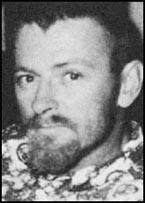 |
| Thomas Eli Davis III |
His ties with another gun-runner named Thomas Eli Davis brought forth this interesting connection Armstrong wrote about:
When JFK was assassinated, Davis was in jail in Algiers, charged with running guns to a secret army terrorist movement then attempting to assassinate French President Charles de Gaulle. Davis was released from jail through the intervention of the CIA’s foreign agent code-named “QJ/WIN,” who was identified by the top-secret CIA Inspector General’s Report as the “principle asset” in the Agency’s assassination program known as ZR/RIFLE.
After Ruby’s arrest for killing Oswald, his defense attorney (Tom Howard) asked Ruby if he could think of anything that might damage his defense. Ruby responded and said there would be a problem if a man by the name of “Davis” should come up. Davis was later identified as Thomas Eli Davis III, a CIA-connected gun-runner and “soldier of fortune.” In December, 1963 the Moroccan National Security Police informed the US State Department that Davis was arrested for an attempted sale of firearms to a minor. When Davis was searched, the police found “a letter in his handwriting which referred in passing to Oswald and to the Kennedy assassination.” Ruby told Howard that “he had been involved with Davis, who was a CIA-connected gun runner entangled in anti-Castro efforts and that he (Ruby) had intended to begin a regular gun-running business with Davis.” … Tom Howard died of a heart attack within a year at age 48. The doctor, without an autopsy, said that he may have suffered a heart attack. But some reporters and friends thought Howard had been murdered.
The HSCA, under Robert Blakey, was intent on covering up any CIA connection or gun-running activities connected with Ruby and failed to investigate the Ruby/Davis connection. They explained, in typical government prose, “Due to limitations of time and resources ... it was not possible to confirm these (Seth Kantor’s) allegations.”
Gerald Ford, in his otherwise uninformative book, Portrait of an Assassin, did reveal that Ruby had been an FBI informant. Before dying, Ruby made the claim that there was a high level conspiracy. The Warren Commission did not even want to question Ruby, when they finally did meet him they were not very probing to say the least!
Synopsis
There you have it folks … sixty-four people with whom Oswald had touch points, and, who also had either plausible, probable, or definite intelligence links. The list could be much longer because this author decided not to include certain witnesses who have not yet convinced enough researchers of their credibility. Furthermore, we do not know about all those who Oswald spent time with learning Russian, acquiring a Minolta camera, were connected to his U2 duties, were in Copenhagen on his return, and possibly in Montreal, and so forth.
In part 2 of his excellent essay “Tokyo Legend? Oswald and Japan,” Kevin Coogan compared the investigation into two genuine defectors who embraced the Soviet Union almost one year after Oswald defected. On September 6, 1960, two former National Security Agency (NSA) employees named Bernon Mitchell and William Martin held a press conference in Moscow. The two mathematician/cryptographers formally announced their defection. As it so happened, the two men had earlier worked at the U.S. military base at Atsugi, Japan.
Contrary to what happened with Oswald, in this case the level of alarm and degree of scrutiny were off the charts: The Mitchell-Martin defection was a tremendous shock to the NSA, which launched an internal investigation that involved speaking to some 450 witnesses. The FBI, the CIA, and military intelligence all worked the case. The inquiry included a microscopic look at both men’s earlier experiences in Japan.
As we can see, not one stone was left unturned in getting to the bottom of what happened, something we are now seeing in the Trump-Russia meddling affair. The underlying assumption here is that all leads must be followed to the end no matter how much time it takes or how much it costs. In the case of the JFK assassination, the opposite happened: A lead’s merit needed to be justified in full in order to be followed up, while respecting budget and time constraints.
Mark Lane found that intelligence’s investigation into Oswald’s defection was very shallow and pro forma. Schweiker added this telling insight: “The most important thing was that the intelligence agencies did all the wrong things if they were really looking for a conspiracy or to find out who killed John Kennedy.”
Two comments from important witnesses further confirm this:
Oswald, it was said, was the only Marine ever to defect from his country to another country, a Communist country, during peacetime. ... When the Marine Corps and American intelligence decided not to probe the reasons for the ‘defection,’ I knew then what I know now: Oswald was on an assignment in Russia for American intelligence.
~James Botelho, former roommate of Oswald who would later become a California judge, in an interview with assassination researcher Mark Lane
When Oswald’s commanding officer John Donovan was questioned by the Warren Commission, he noted that they did everything they could to avoid exchanges about Oswald and the U2 program.
In the next section we will explore where investigators should have gone had they followed up on these leads by focussing on one of the most important ones.
Where There’s Smoke There’s Fire
David Phillips (Larry Hancock – Destiny Betrayed)
Concerning the CIA career officer who left the most intel fingerprints on Oswald, let us refer to Larry Hancock, who has written extensively about him, and from whose work we can conclude the following about his potential involvement in the conspiracy:
A) He had the perfect credentials.
 |
| David Atlee Phillips |
Phillips joined the CIA in 1950. He played a significant role in the CIA coup that removed Jacobo Arbenz, the president of Guatemala in 1954. An ex ad-man and actor, Phillips was a master at propaganda. According to Hancock, Phillips was part of a cadre of like-minded CIA officers that specialized in regime change. Some of the techniques involved featured use of surrogates, putting the blame on a foe, creating a scenario, including paper trails, files and fabrications that could be plausible, and compartmentalized logistics on a need to know basis. This cadre included persons of interest in the JFK assassination: E. Howard Hunt, David Morales, and William Harvey are some of the key names that also figure prominently in many of the assassination writings.
There are reports Phillips worked with David Morales out of the JM/Wave Miami CIA station in attempts to remove Castro. Phillips helped launch Alpha 66, one of the most violent and active anti-Castro Cuban exile groups. He worked undercover in Cuba in 1959-60 when he recruited its leader Antonio Veciana. According to Howard Hunt, he was also involved with the DRE.
B) He had the motive.
He became one of many disillusioned officers who blamed and resented JFK after the failed Bay of Pigs and the firing of their popular chief Allen Dulles.
He demonstrated his insubordination to Kennedy: Phillips’ direction of Alpha 66 to attack Russian targets in Cuba was intended to provoke a direct U.S. –– Russian conflict which would result in the liberation of Cuba. Through Veciana, Phillips independently supported multiple unsanctioned assassination plots against Fidel Castro. Alpha 66, Veciana, Eddie Bayo and Tony Cuesta were not directed by the CIA but personally by Phillips. Phillips specifically told Veciana his goal was to provoke US intervention in Cuba by “putting Kennedy’s back to the wall.”
C) His quasi-confessions.
According to Larry Hancock, the author of Someone Would Have Talked, just before his death Phillips told Kevin Walsh, an investigator with the House Select Committee on Assassinations: “My final take on the assassination is there was a conspiracy, likely including American intelligence officers.” (Some books wrongly quote Phillips as saying: “My private opinion is that JFK was done in by a conspiracy, likely including rogue American intelligence people.”)
David Atlee Phillips died of cancer on 7th July, 1988. He left behind an unpublished manuscript. The novel is about a CIA officer who lived in Mexico City. In the novel the character states: “I was one of those officers who handled Lee Harvey Oswald ... We gave him the mission of killing Fidel Castro in Cuba ... I don’t know why he killed Kennedy. But I do know he used precisely the plan we had devised against Castro. Thus the CIA did not anticipate the president’s assassination, but it was responsible for it. I share that guilt.”
In his last conversation with his brother, who suspected him of being a conspirator and was pressing him on it, he refused to confirm his innocence and admitted being in Dallas on November 22nd 1963.
D) E. Howard Hunt names him.
In January 2004, E. Howard Hunt gave a taped interview with his son, Saint John Hunt, claiming that Lyndon Baines Johnson was the instigator of the assassination (coded The Big Event) of John F. Kennedy, and that it was organized by Phillips, Cord Meyer, Frank Sturgis and David Sanchez Morales.
E) His lies.
He claimed to Fonzi that he had never met Veciana. How could the person who coordinated anti-Castro activities not know the Alpha 66 leader?
He claimed to Richard Sprague (HSCA) under oath that tapes of Oswald had been routinely recycled:
Phillips’ testimony was that there was no photograph of “Oswald” because the camera equipment had broken down that day and there was no audio tape of “Oswald’s” voice because they recycled their tapes every six or seven days. The problem with his story was, we had obtained a document, it was from the desk of J. Edgar Hoover, it was dated November 23rd, 1963, the very next day after the assassination. This document was a memo to all FBI supervisorial staff stating, in substance, that FBI agents who have questioned Oswald for the past 17 hours approximately, have listened to the tape made on October 1st, by an individual identifying himself as Lee Henry Oswald inside the Russian Embassy, calling on the phone to someone inside the Cuban Embassy and the agents can state unequivocally that the voice on the tape is not the voice of Lee Harvey Oswald, who is in custody.
He professed ignorance to Dan Hardway (HSCA) about all the disinformation stories trying to link Oswald to Castro agents that were initiated by his assets.
F) His omnipresence before, during and after Oswald’s demise.
Oswald’s opening of an FPCC chapter in New Orleans when this organization was spiralling out of control and infested with informants and Oswald’s extremely provocative way of promoting his supposed views smacked of an operational ruse overseen by Phillips who was running a program called AM/SANTA that was designed to infiltrate and undermine the FPCC. In the article The Three Failed Plots to Kill JFK, this author identified four other potential patsies who were FPCC-linked and who had travelled to Mexico City.
Phillips admitted knowing New Orleans-based FBI agent Warren DeBrueys, who was monitoring the FPCC and most likely using Oswald as an informant. Richard Case Nagell’s FPCC-related activities with Oswald, with another potential patsy Vaughn Marlowe, and a few FPCC chapters, combined with his visits to Mexico City and hints he gave to a friend that he worked with Phillips, add further weight to the Phillips-FPCC-Oswald conduit.
According to CIA-linked electronics wizard Gordon Novel, a person resembling Phillips, masquerading as an employee of the Double-Check Corporation, even attended a meeting along with Guy Banister and Sergio Arcacha Smith in Banister’s offices. Researcher Lisa Pease’s analysis led her to conclude that this person was in fact Phillips and Double-Check was a CIA front.
Banister, Smith and Ferrie at one time helped train Cuban exiles for the Bay of Pigs near Lake Pontchartrain north of New Orleans on a CIA controlled site. In 1967, while the CIA was trying to keep this information hidden from Garrison, Phillips wrote a memo describing the status of that operation.
Related to these training activities is, according to this author, one of the most mysterious pieces of evidence: a training film that was seen by a few HSCA investigators before it eventually disappeared. According to HSCA Deputy Counsel Robert Tanenbaum, he viewed a film of a CIA training camp in New Orleans. He brought in witnesses to identify certain people in the film. From the work done of it, he said that Oswald, Banister and Phillips were depicted in the film.
E. Howard Hunt claimed that Phillips was a key person behind the DRE. Phillips admitted helping it in its PR efforts. Carlos Bringuier of the DRE got into a fight with Oswald on Canal Street in August of 1963. He wrote a press release that was published the day after the assassination to position Castro as being behind Oswald; the fingerprints of Phillips became even more evident. The fact that George Joannides –– who took over DRE coordination activities from Phillips –– was inserted into the HSCA investigation by the CIA as a key liaison and thereafter started an obvious obfuscation operation underscores this suspicious event. Here is how HSCA investigator Dan Hardway described this situation:
We have, since 1978, learned that George Joannides was running the propaganda shop at the CIA’s Miami JMWAVE Station in 1963. It is extremely unlikely that Mr. Joannides could have occupied that position and not have known, and worked with, David Phillips. In addition, in 1963, we now know, George Joannides was the case officer handling the DRE. In 1977 the CIA specifically denied that DRE had a case officer assigned when asked that question by the HSCA.
Through Ed Butler and the CIA-associated INCA, Oswald’s apparent charade and his televised interview went a long way in painting his leftist persona to the public at large. INCA had been used by Phillips for propaganda purposes during the period leading up to the Bay of Pigs. Butler was quick to send recordings to key people the day of the assassination.
Antonio Veciana, who was Phillips’ go-to guy in the Cuban exile community for some thirteen years also, over time named Phillips. He told Gaeton Fonzi he had seen him talk to Oswald in Dallas in September 1963. Phillips also tried to get Veciana to convince a relative of his in Mexico City to fabricate a story about seeing Oswald taking money from Castro agents.
In October 1963, the CIA monitored the impersonation of Oswald in Mexico City at the Cuban consulate in what appears to be a clear attempt to link him to Castro and the Soviets –– all this right under Phillips’ nose as he was based there. Phillips then was clearly involved with the manipulation of evidence (tapes, photos and transcripts) in the subsequent cover-up.
On November 24 1963, Jack Ruby terminated Oswald, thus sealing his lips. Phillips’ close friend, Gordon McLendon, was a close friend of Jack Ruby.
Right after the assassination, persons of interest like John Martino, Frank Sturgis and Phillips-linked contacts (Bringuier, Butler and journalist Hal Hendrix) began a “Castro was behind it” spin to the assassination.
Following the assassination, it became obvious that Phillips was connected to a number of disinformation stories trying to link Oswald to Castro agents. HSCA investigator Dan Hardway called him out on it:
Before our unexpurgated access was cut off by Joannides, I had been able to document links between David Phillips and most of the sources of the disinformation that came out immediately after the assassination about Oswald and his pro-Castro proclivities. I confronted Phillips with those in an interview at our offices on August 24, 1978. Phillips was extremely agitated by that line of questioning, but was forced to admit that many of the sources were not only former assets that he had managed, in the late 50’s and early 1960’s, but were also assets whom he was personally managing in the fall of 1963. Mr. Phillips was asked, but could not explain, why the information that came from anti-Castro Cuban groups and individuals pointing to Cuban connections, all seemed to come from assets that he handled personally, but acknowledged that that was the case.
Conclusion
So as we can see, the noose was getting very tight around the Phillips’ neck during the Church and HSCA investigations. By following leads as far as they could, investigators like Schweiker, Hart, Fonzi, Tanenbaum, Sprague, Hardway and Lopez were zeroing in on who was behind the plot. These real sleuths brought the ball forward: The Warren Commission was finally fully impeached and the outline of a conspiracy began taking shape.
And just when they had suspects like Hunt and Phillips in their sights, a combination of factors took place that stalled and then stopped all progress. George H. W. Bush became head of the CIA and called the shots so as to protect the integrity of this all-American institution; HSCA leaders Sprague and Tanenbaum were forced out and a collegial working relationship with the CIA was then put in place by its new head Robert Blakey, and George Joannides was installed strategically to sabotage investigative efforts.
Phillips was now off the hook.
Moving forward, we do need to be cautious about how we interpret all of this. One may be tempted to conclude from this article that the CIA as an organization was complicit in killing the President. This in my opinion is highly doubtful and quite different from suspecting persons who can be linked to intelligence. When one goes over the names of the usual suspects, one is struck by their outlier status. It is also easy to imagine implication by someone in a ruse which ended up going in a completely unforeseen direction: For example DeBrueys using Oswald to weed out Castro sympathizers while having no clue that he was being set up to be a patsy could be quite plausible in this author’s opinion. It would be however quite natural for intelligence agencies to want to distance themselves from the assassination and its embarrassing implications.
In 1993, the ARRB began ordering releases of declassified information. That information made all of this obvious to those who looked into the goldmine of new information. It added even more evidence that vindicated the authors who were discredited mercilessly by the pro-Warren Commission propaganda network. Absent from all this data-mining are the historians and journalists who are still frozen in the Warren Commission time-warp –– the same people who are fighting for their lives countering Donald Trump who has accused them of being peddlers of fake news.
On a positive note, Randy Benson spoke with an historian who saw his recent documentary, The Searchers, and who admitted not knowing about all the post-Warren-Commission discoveries, and pledged to change his way of relating the assassination. My bet is that students who read his account will respect him, the way we should all show our respect to Richard Schweiker.


